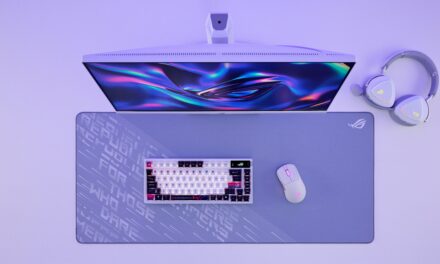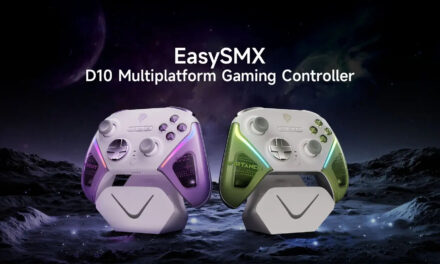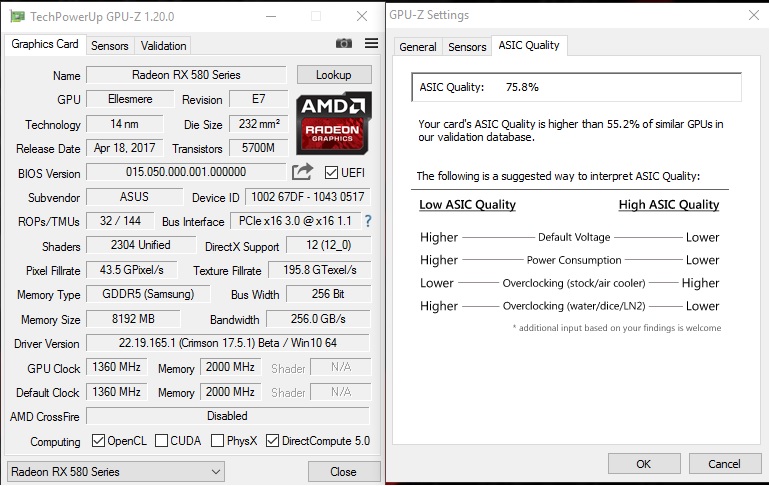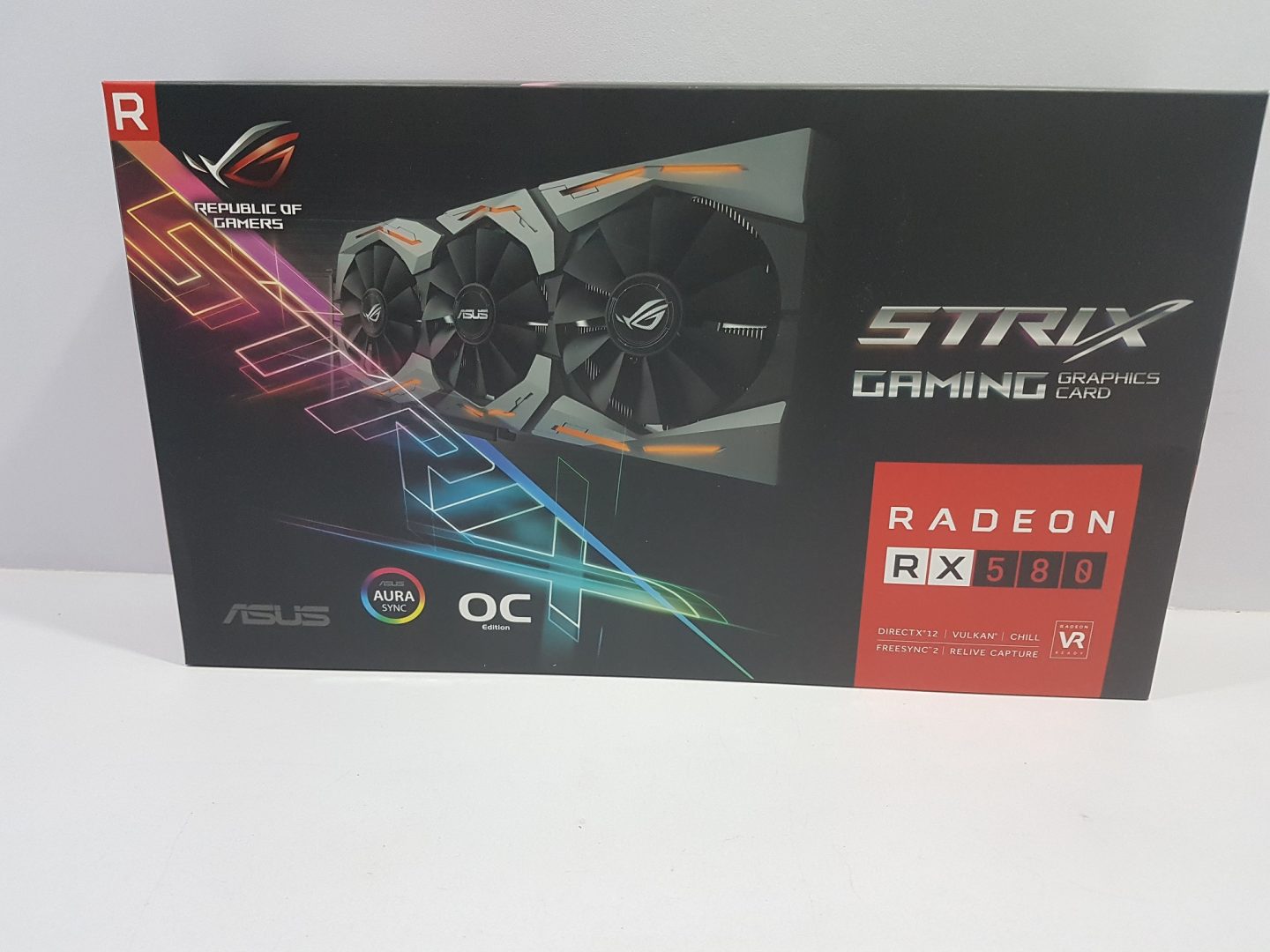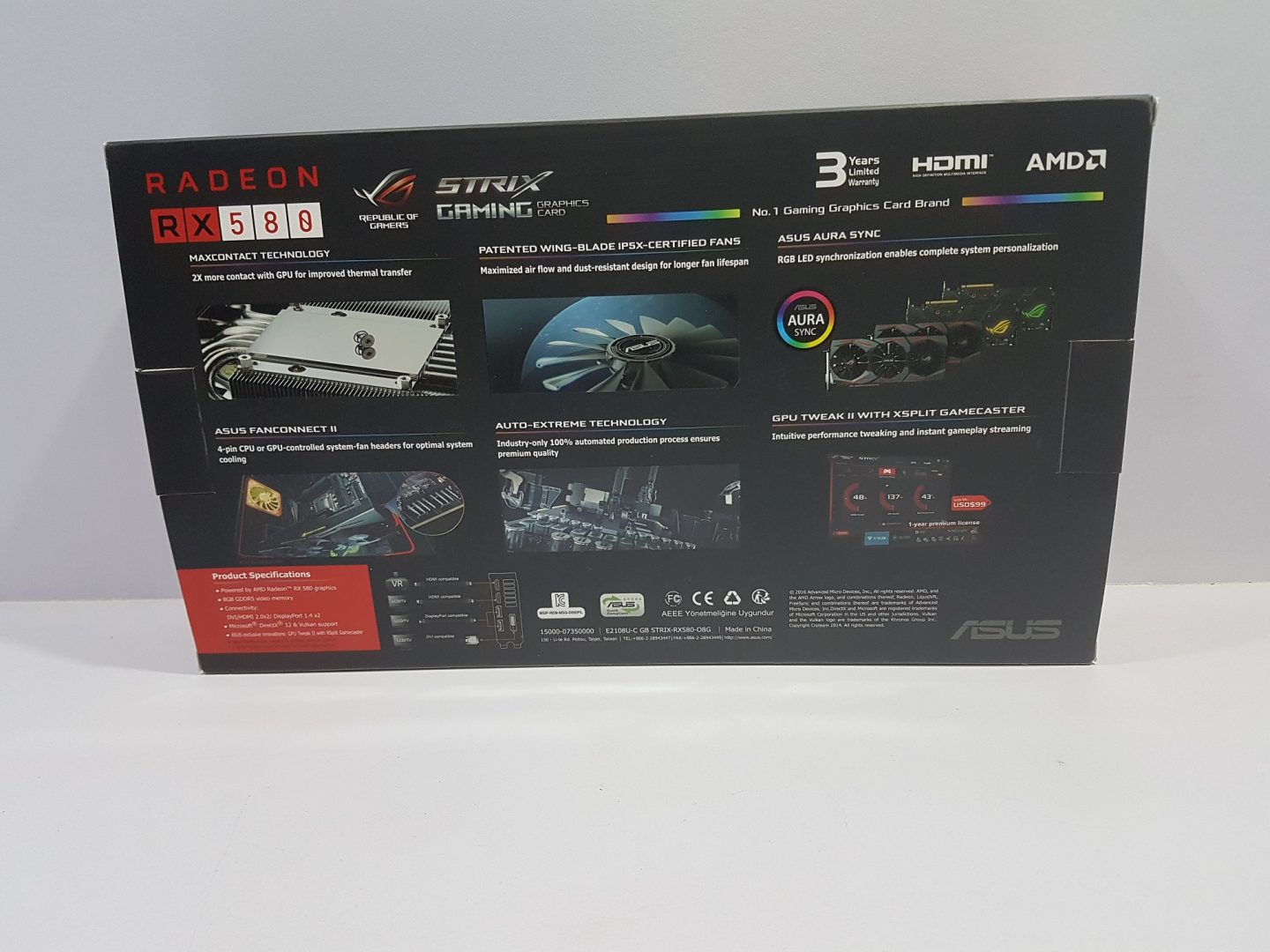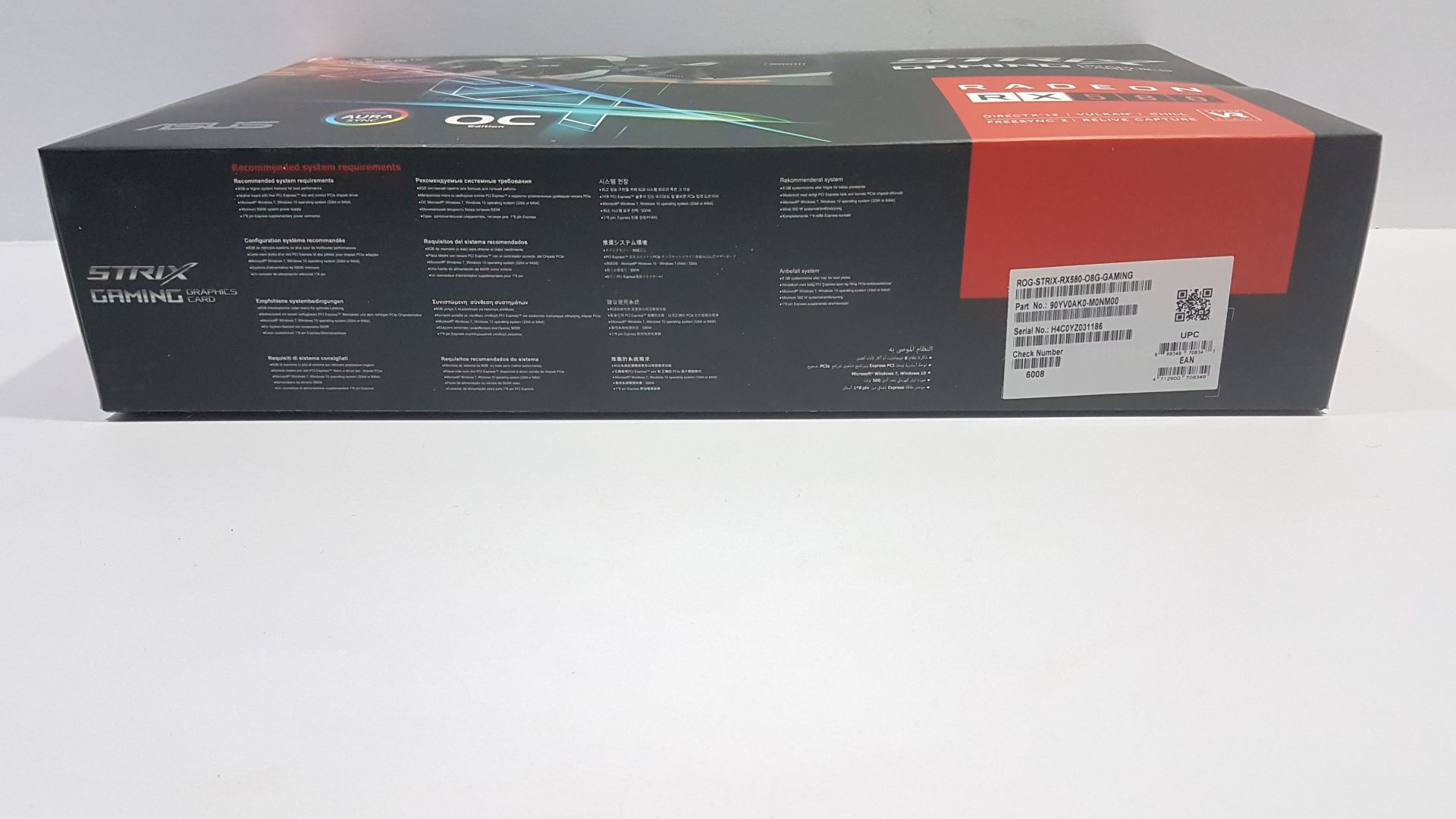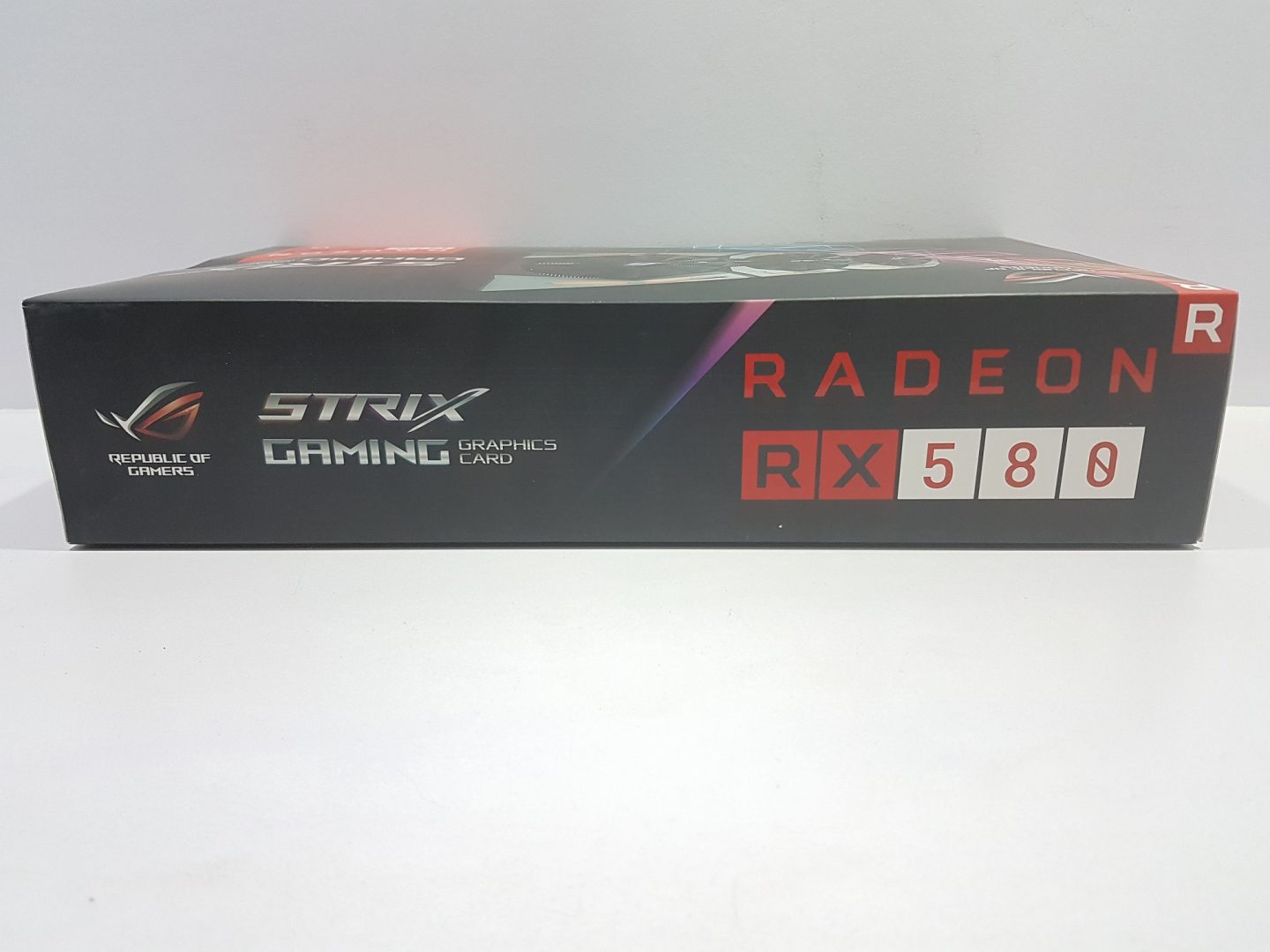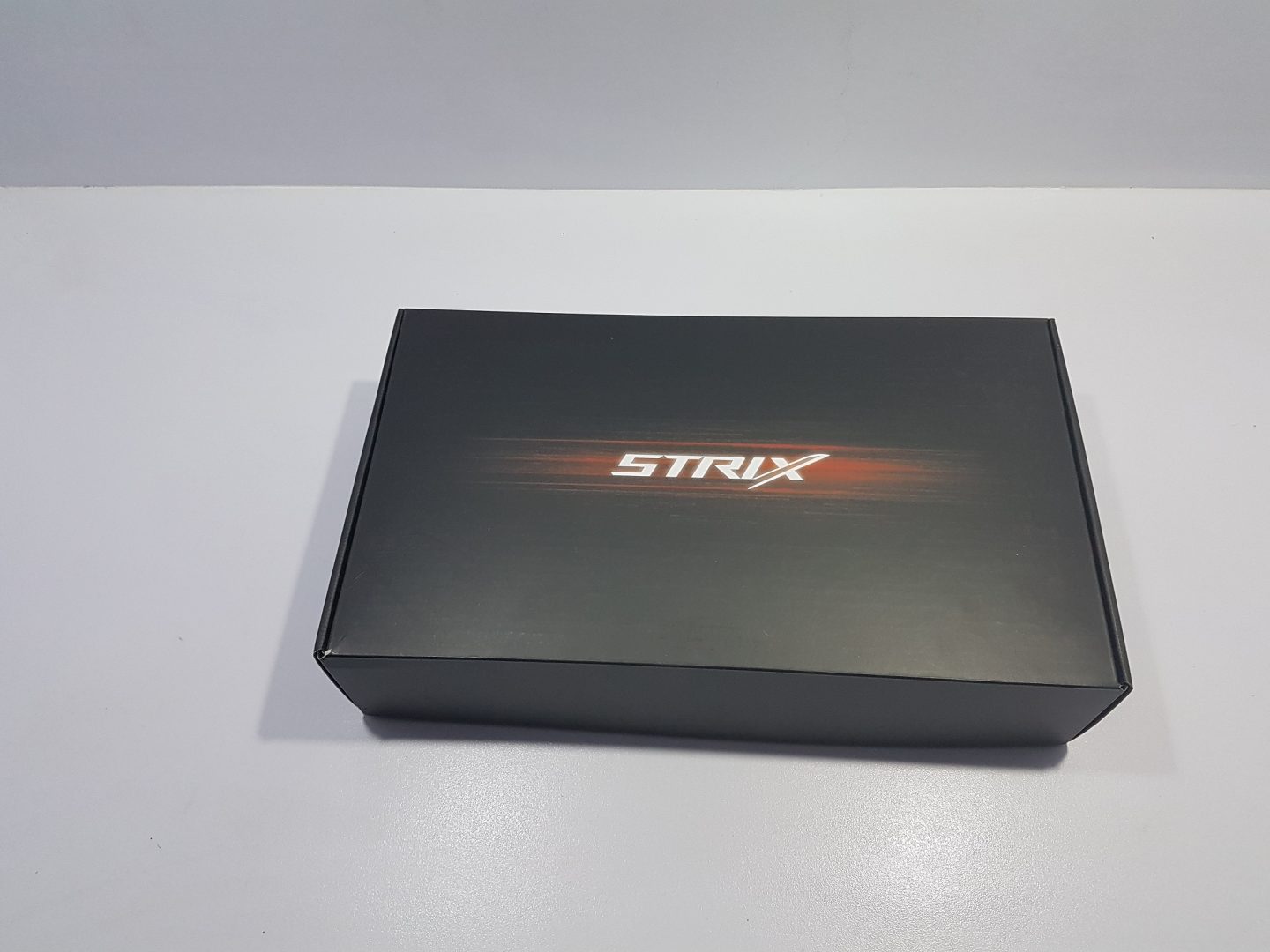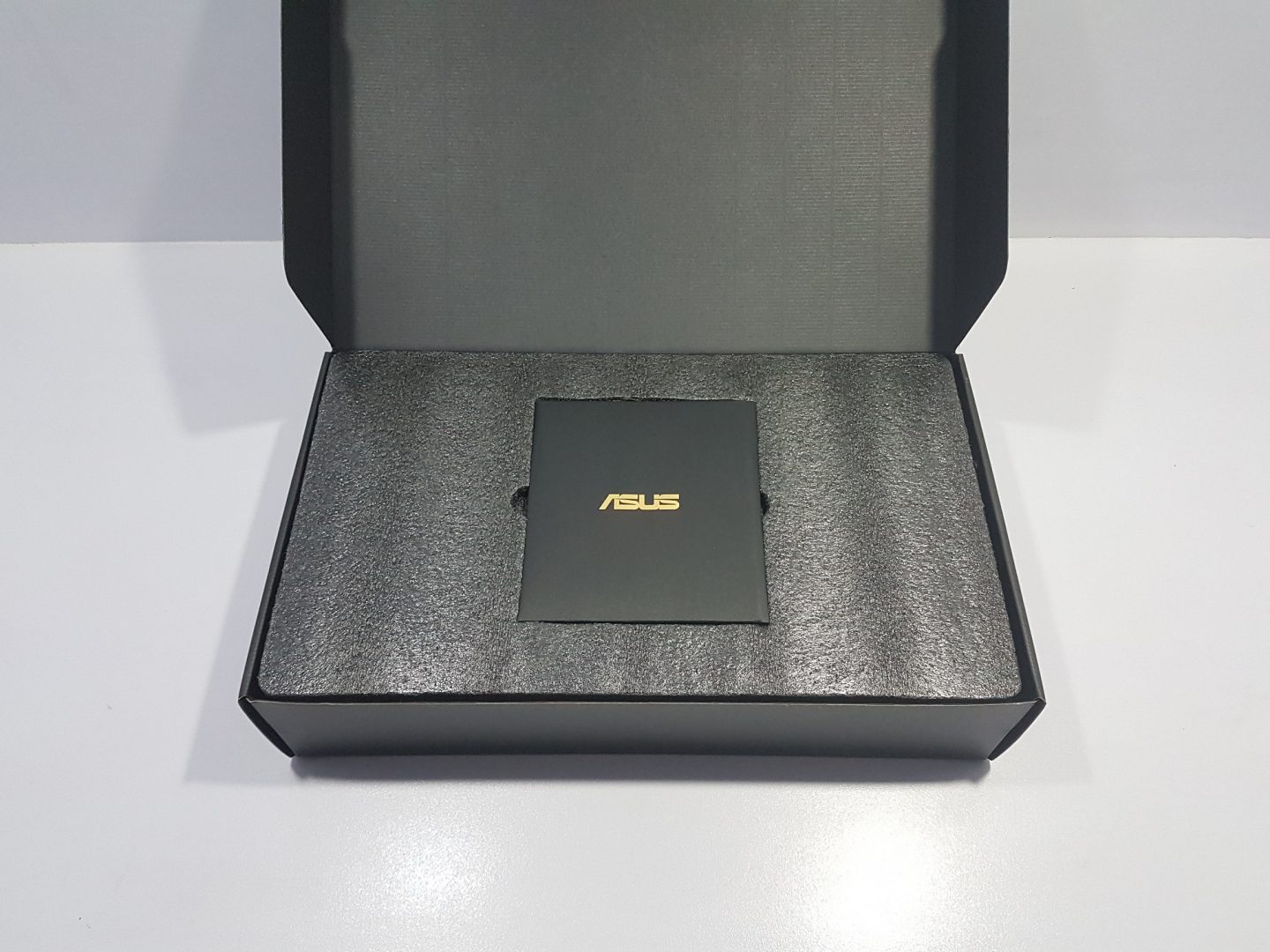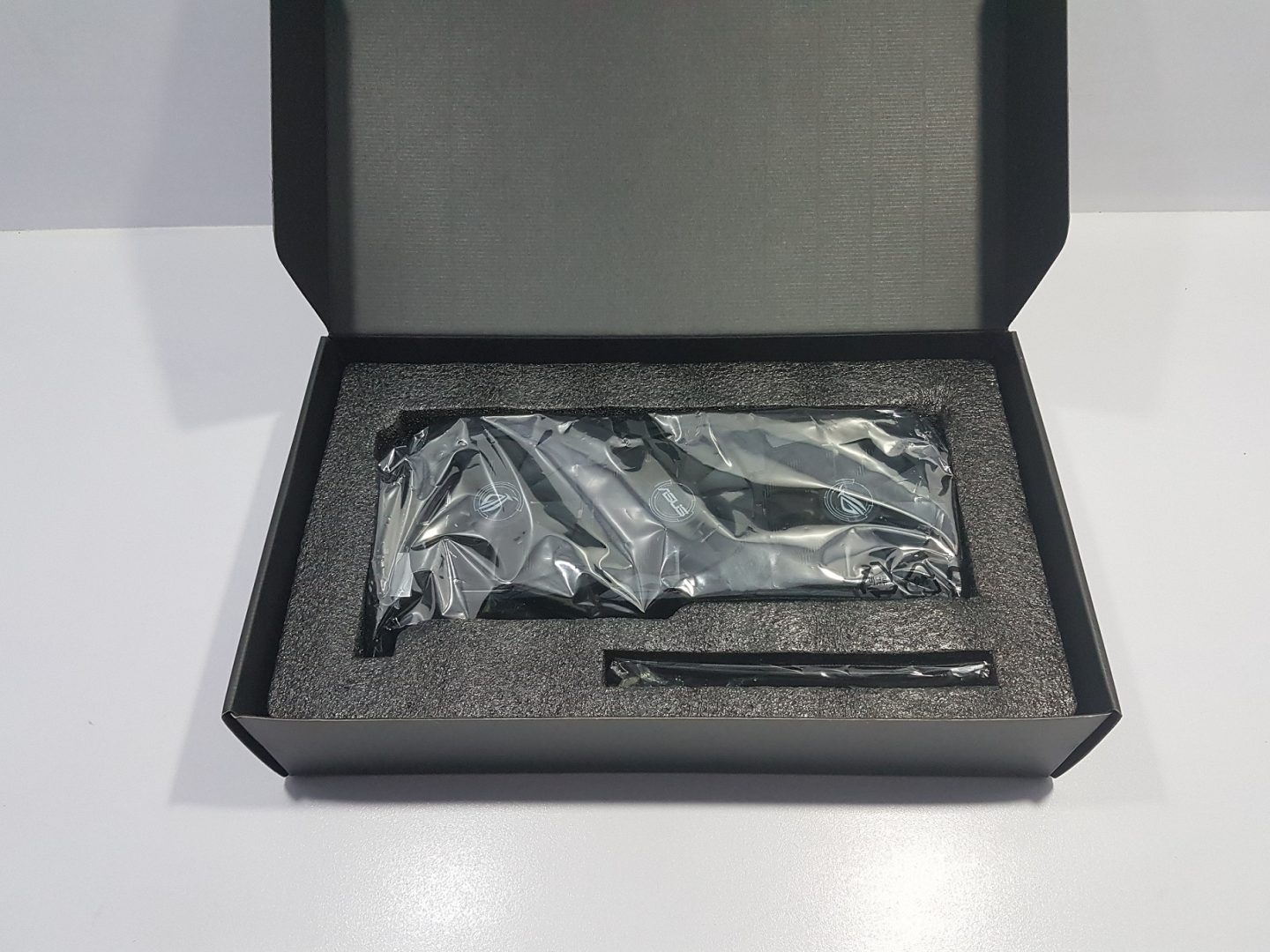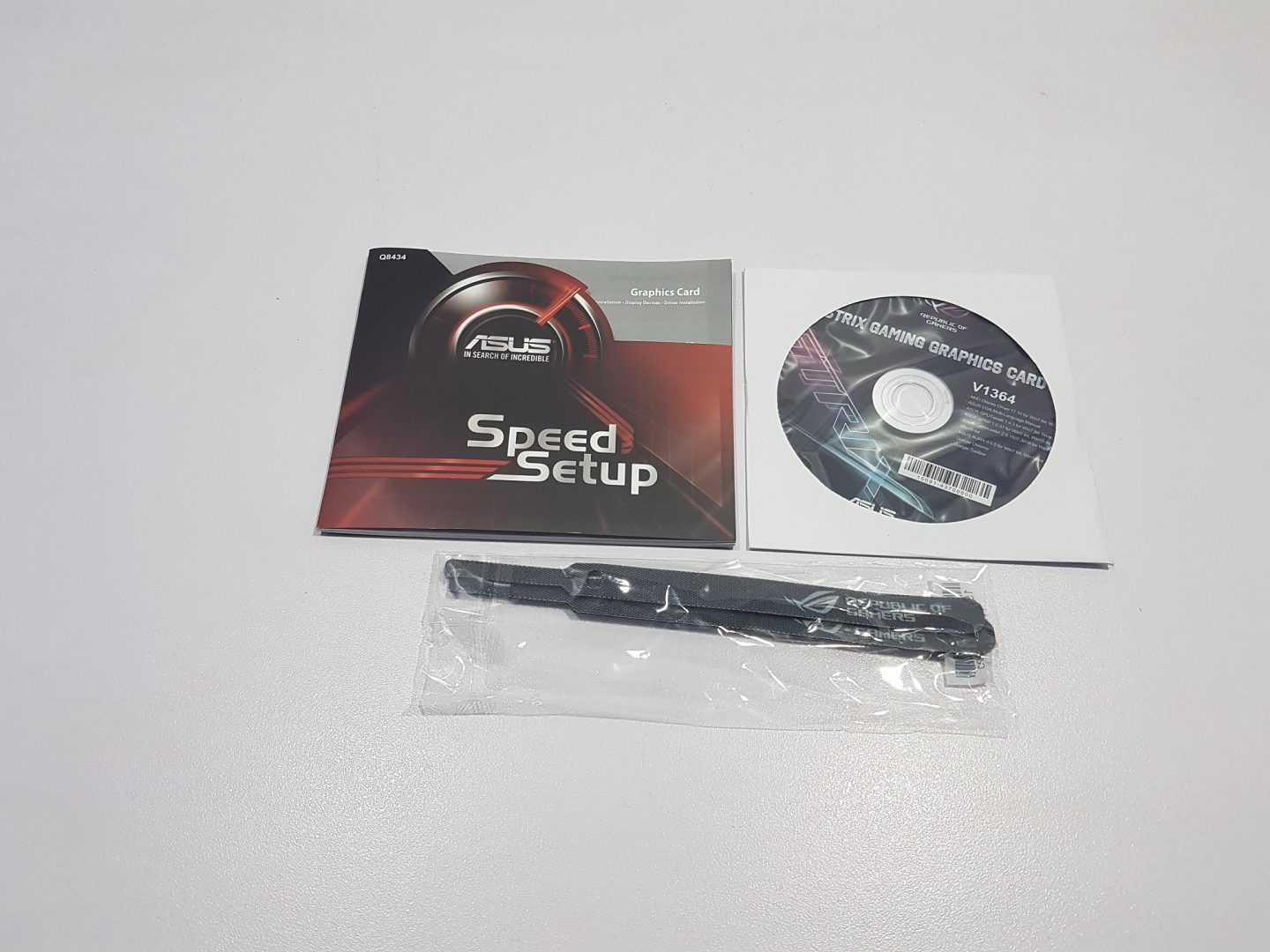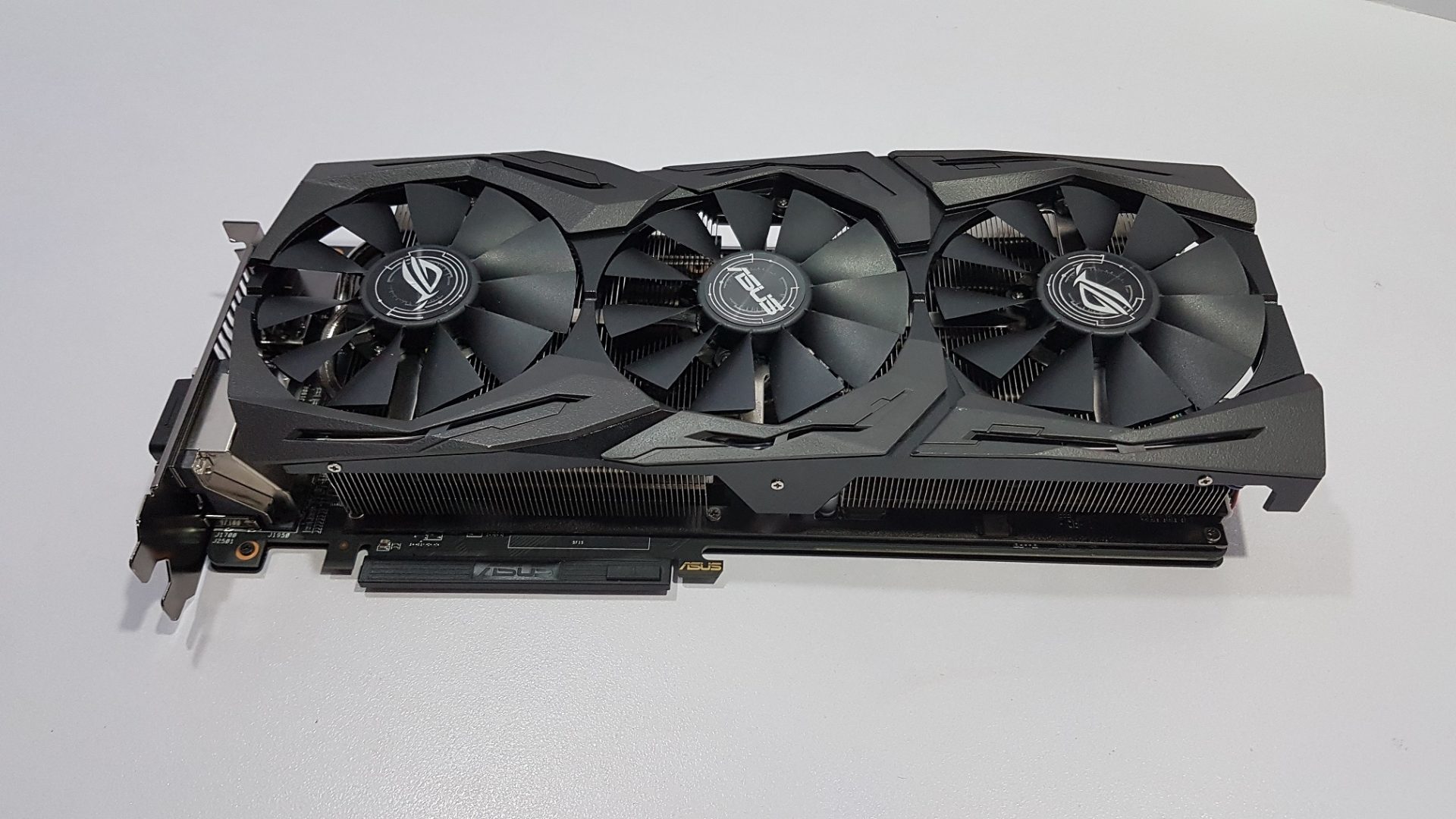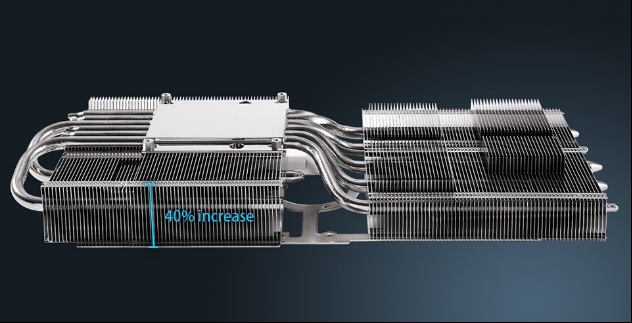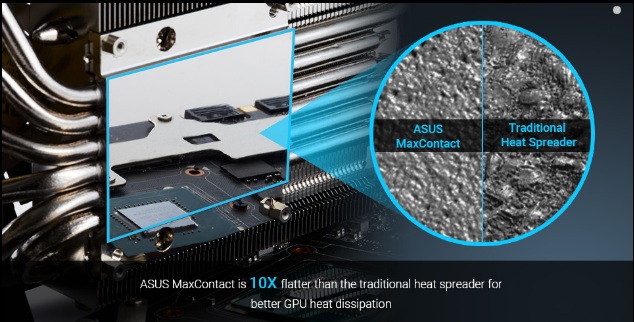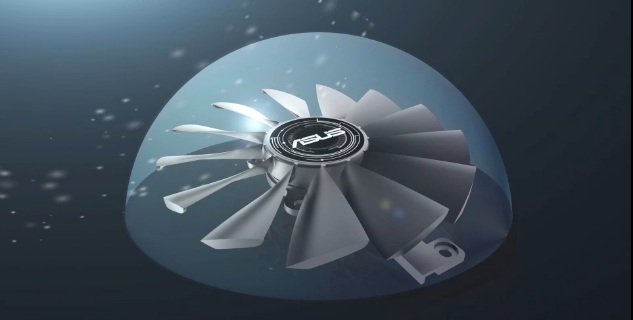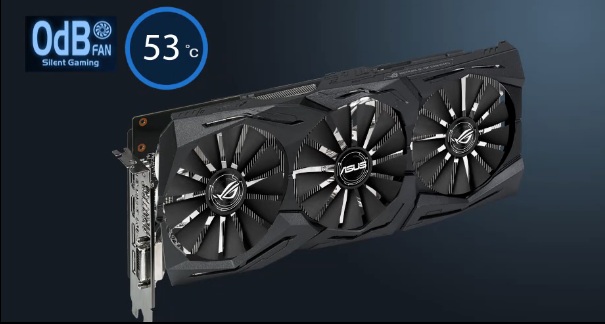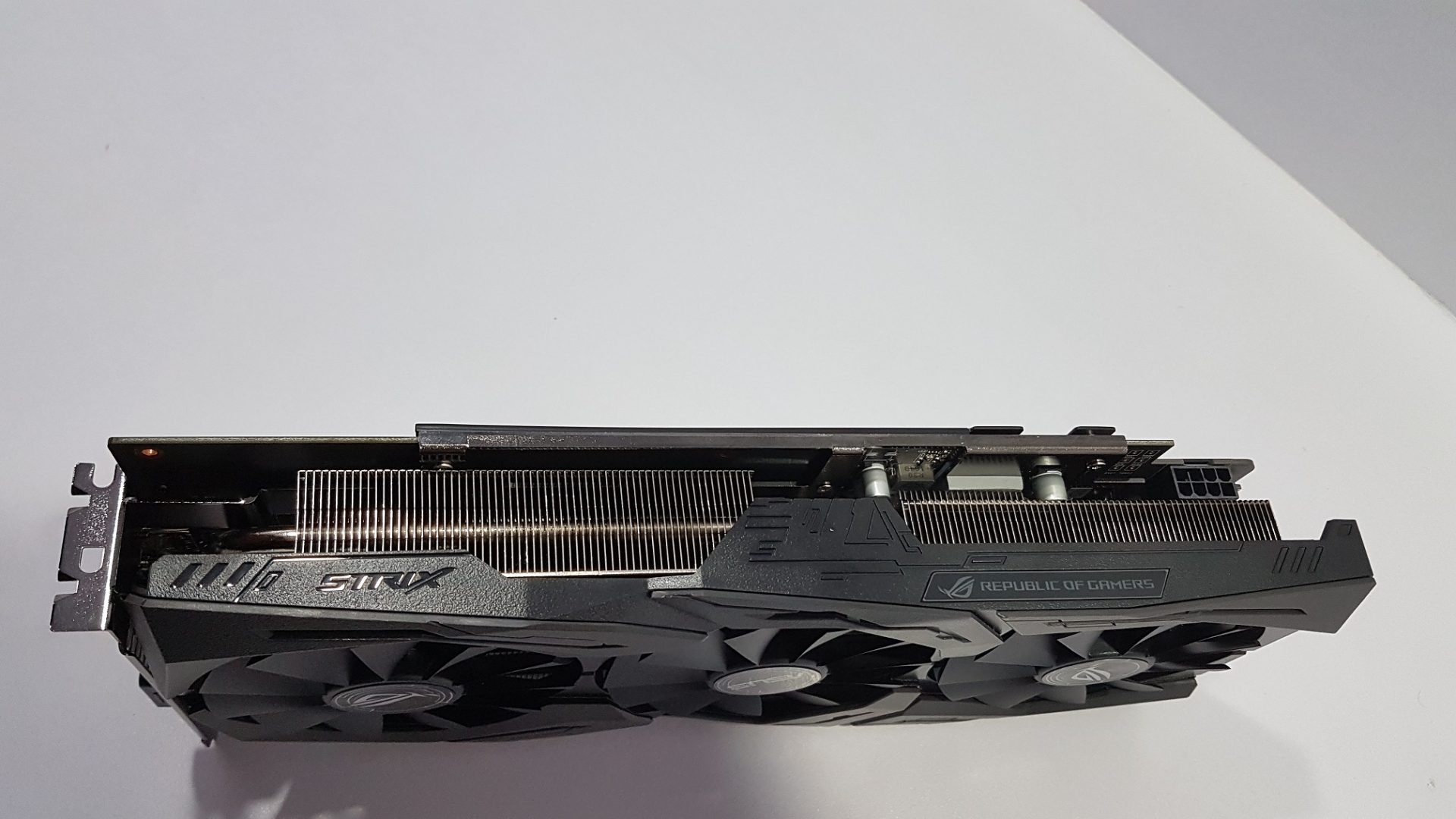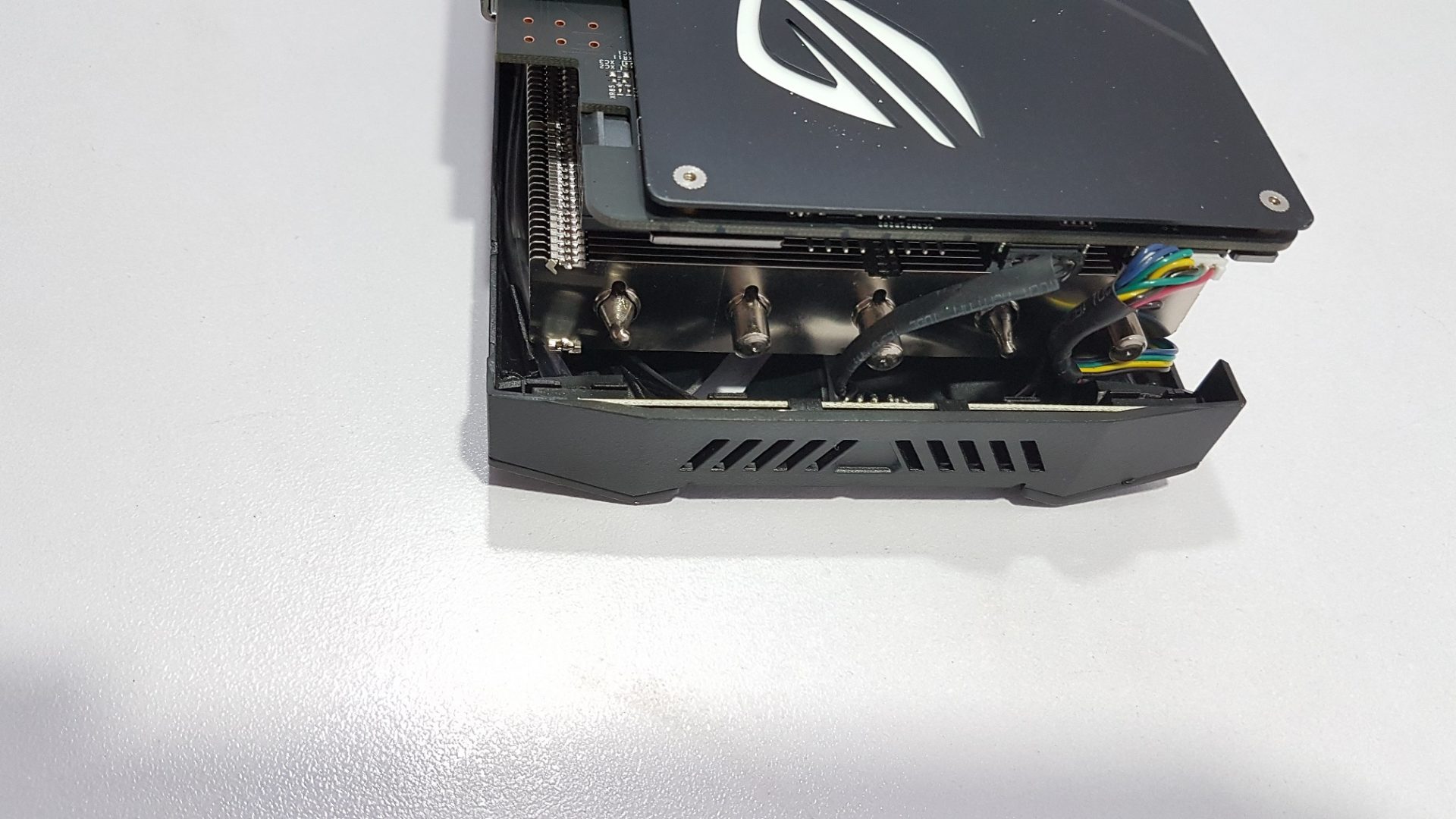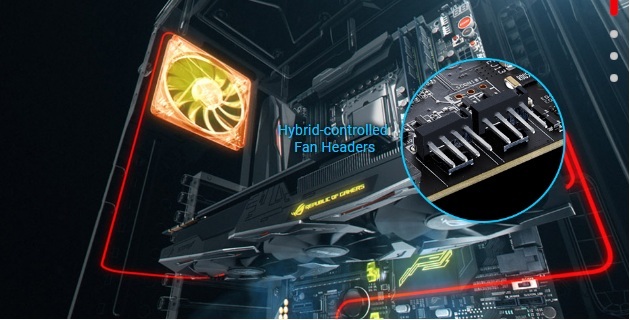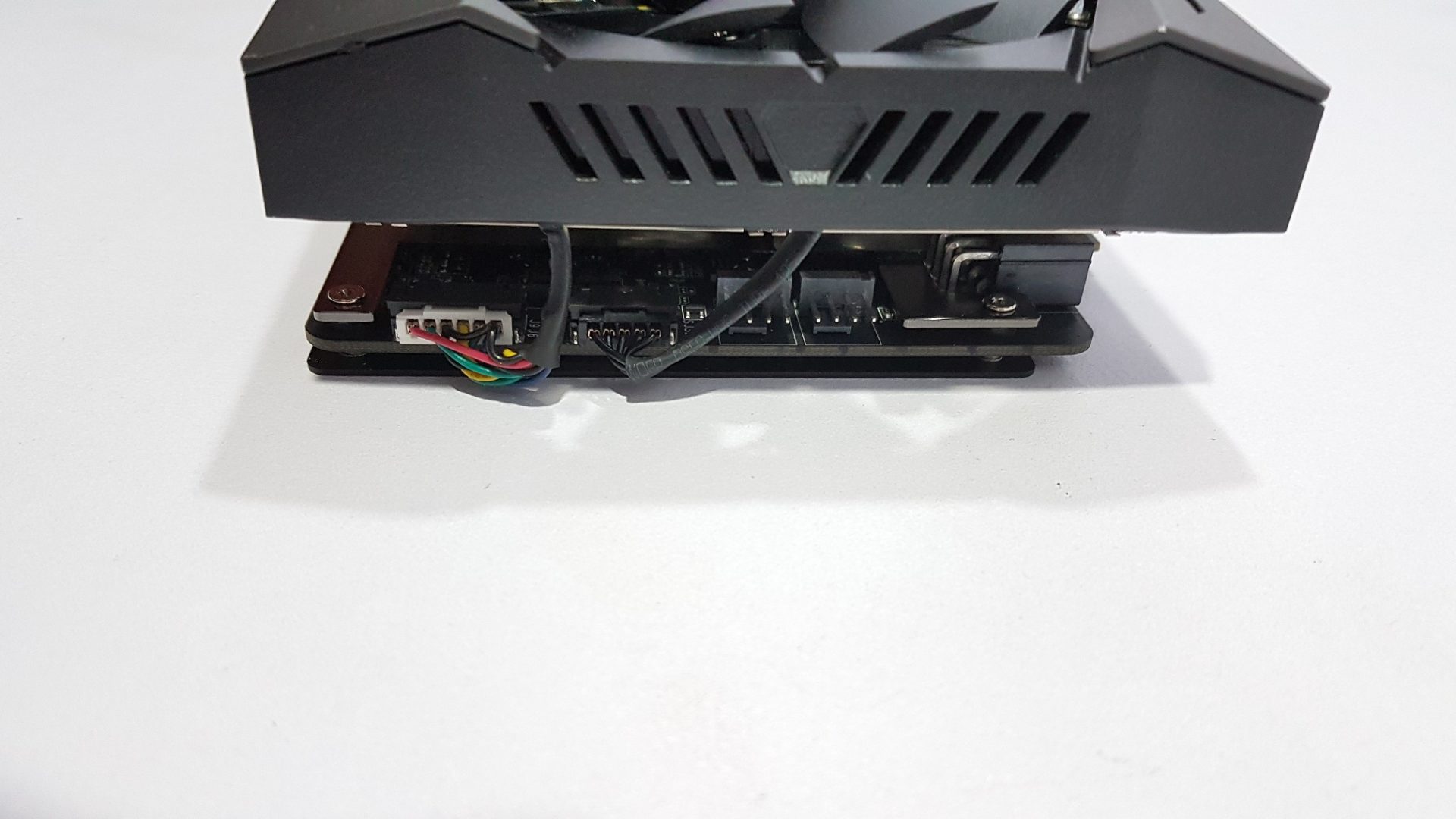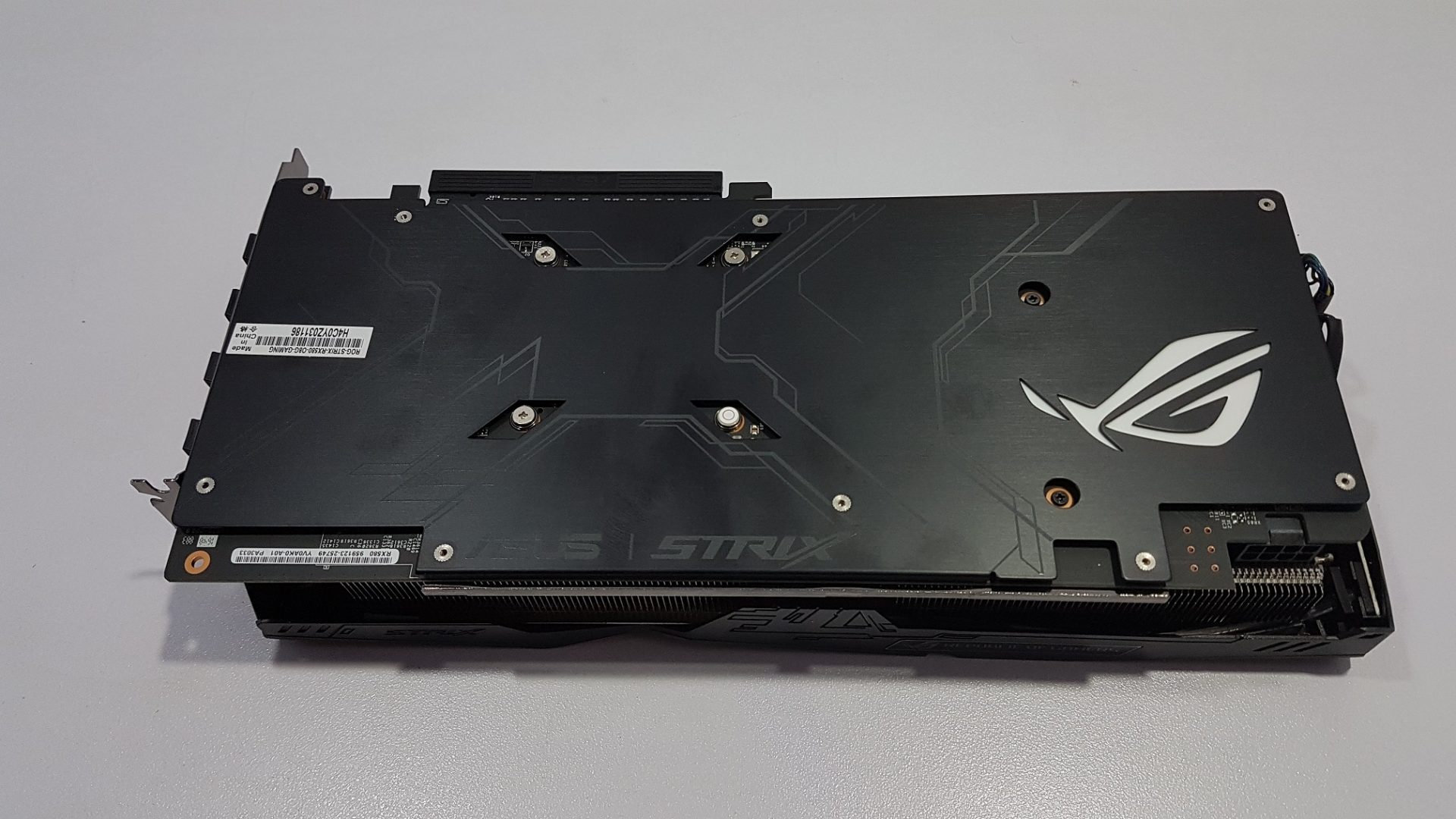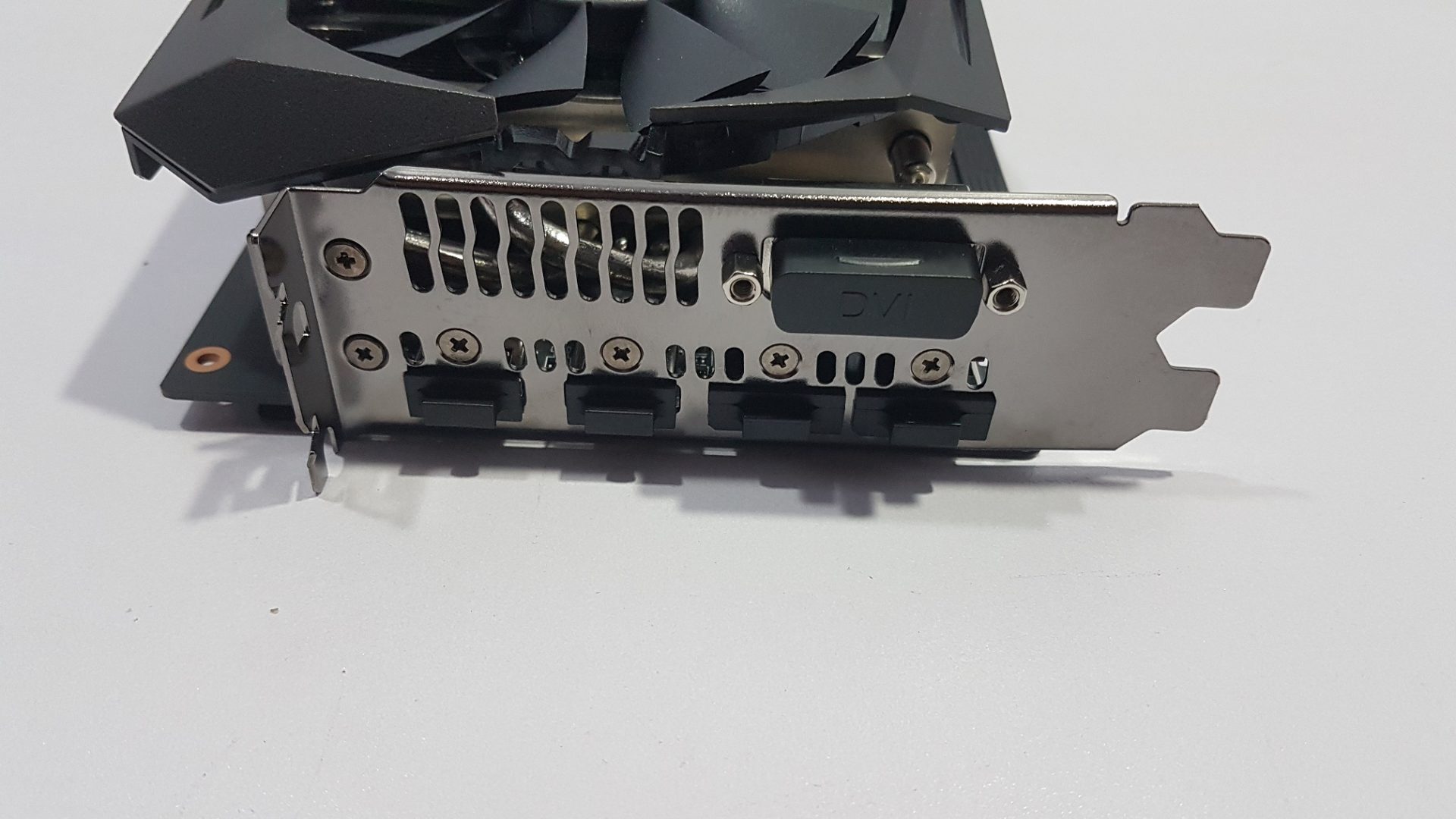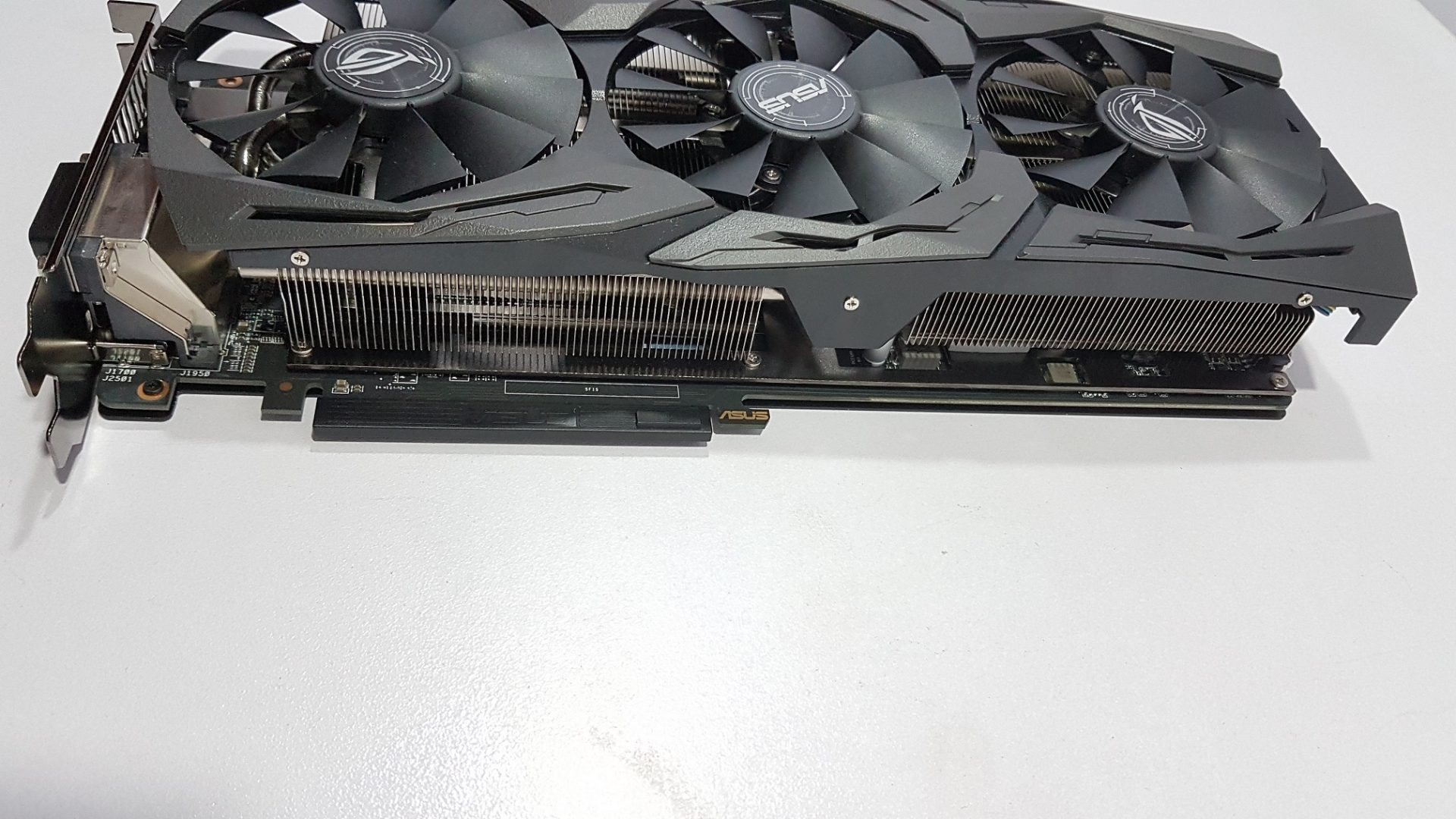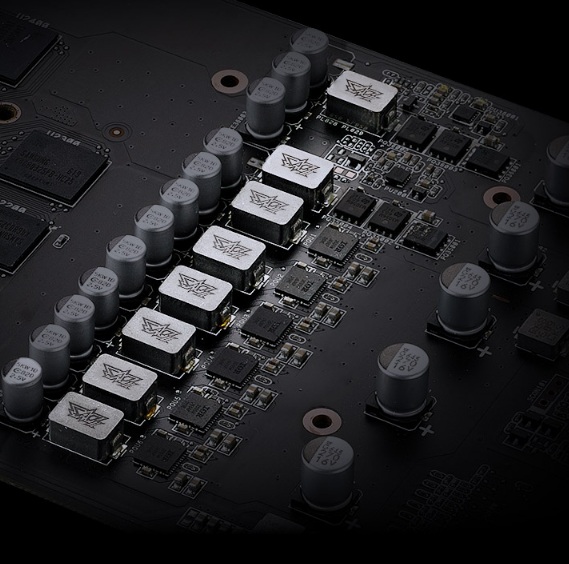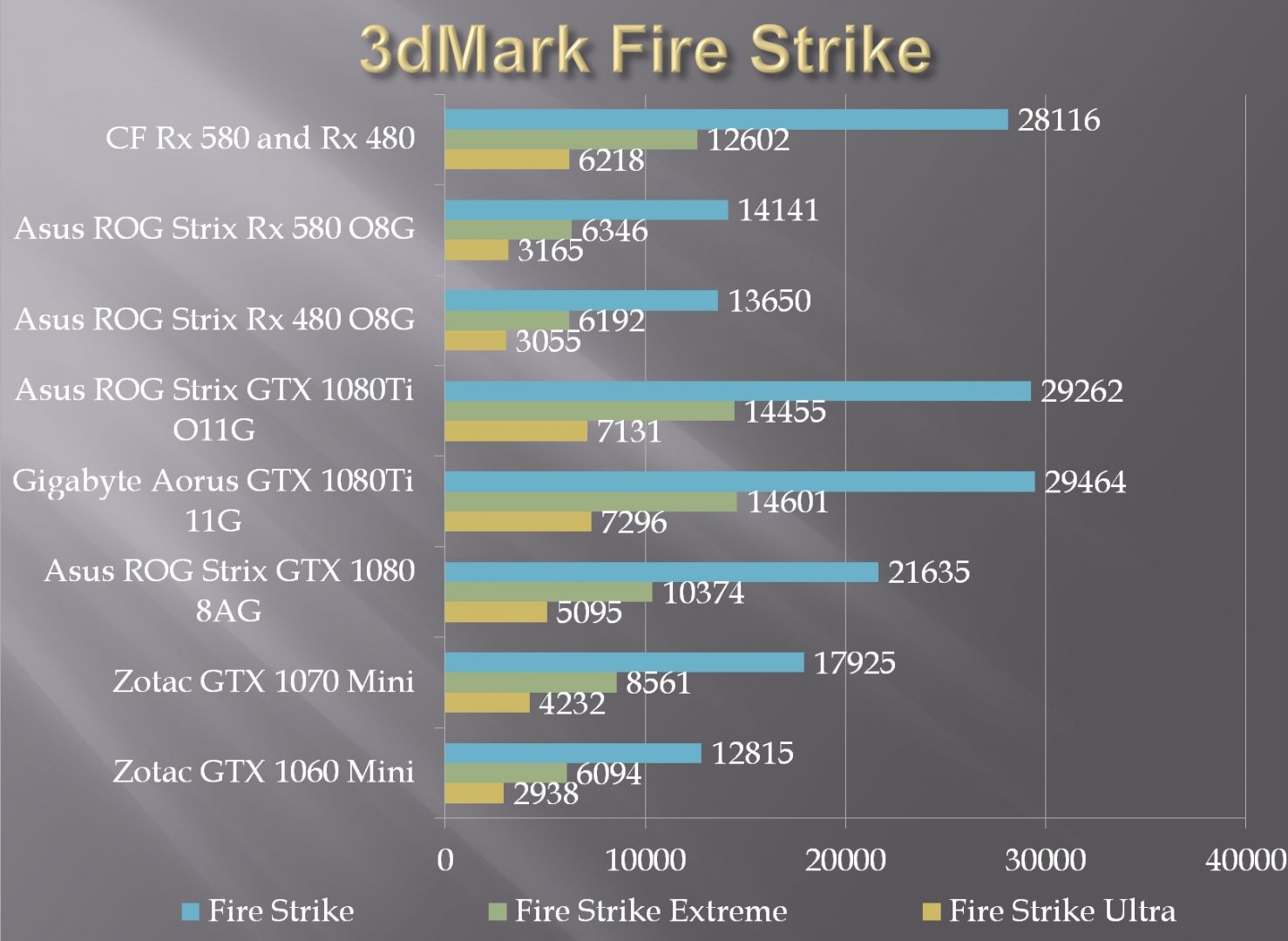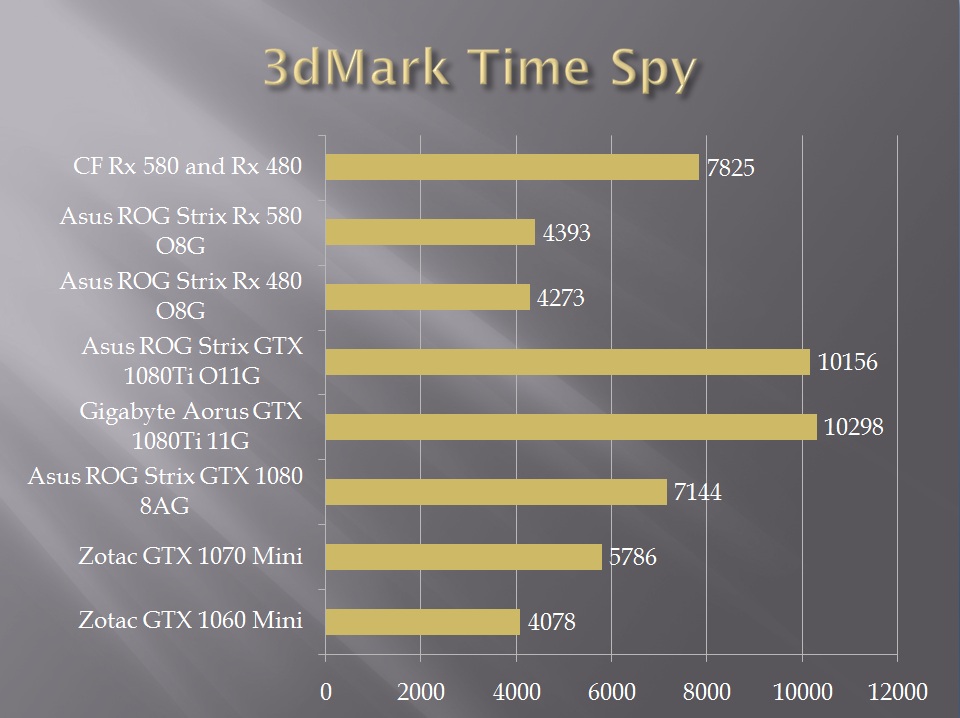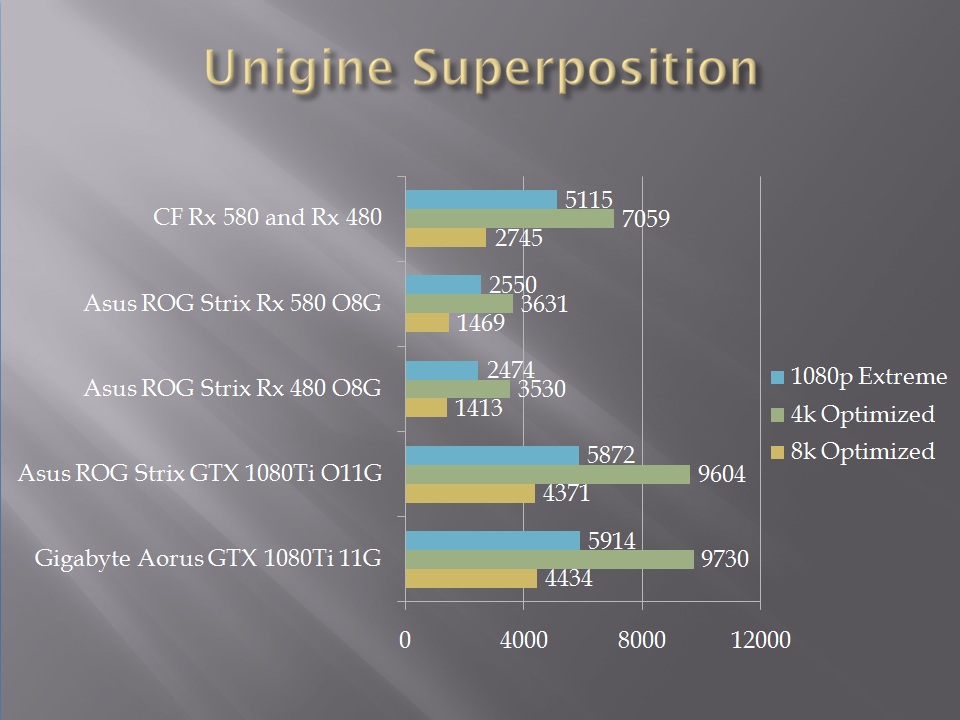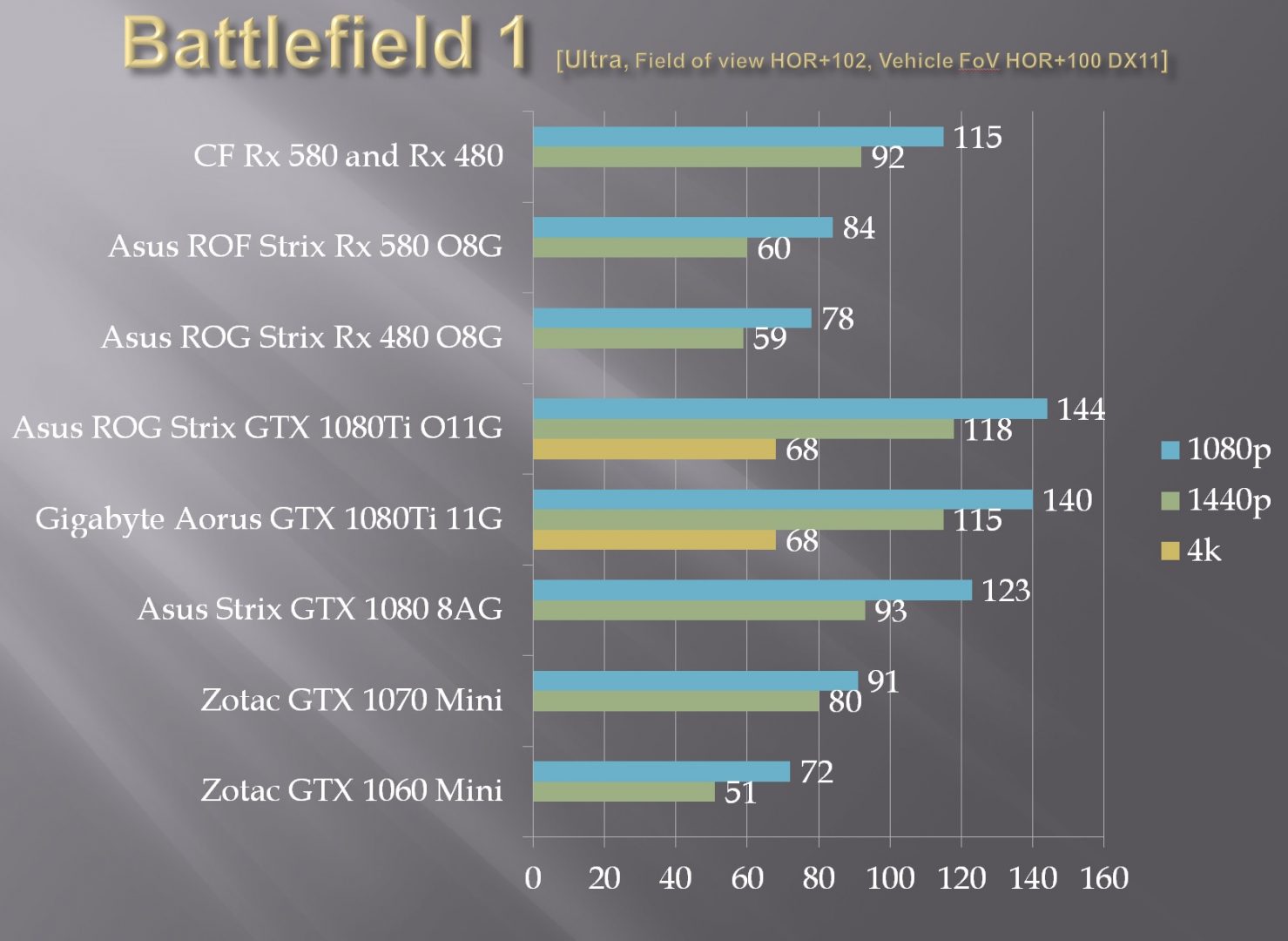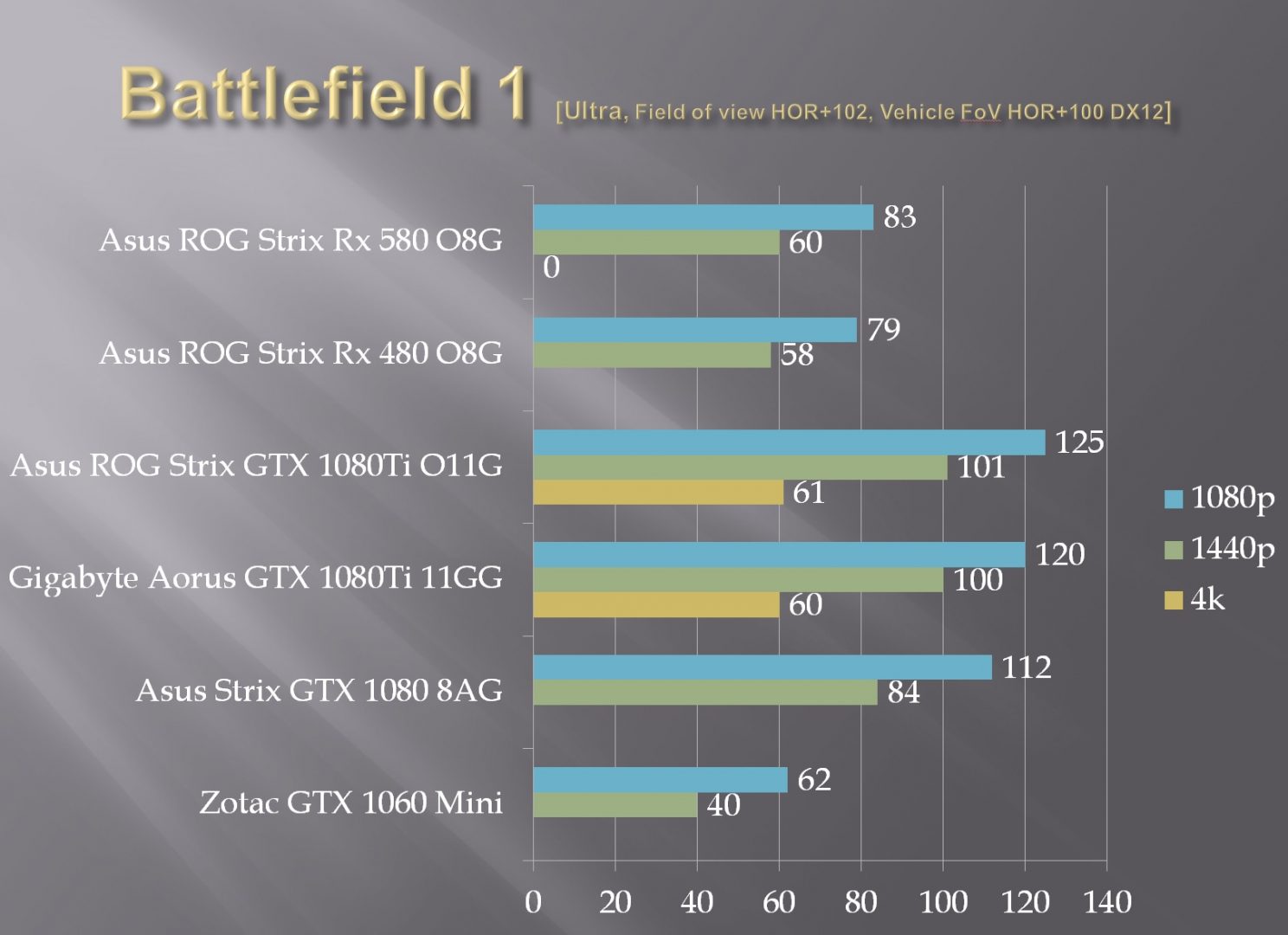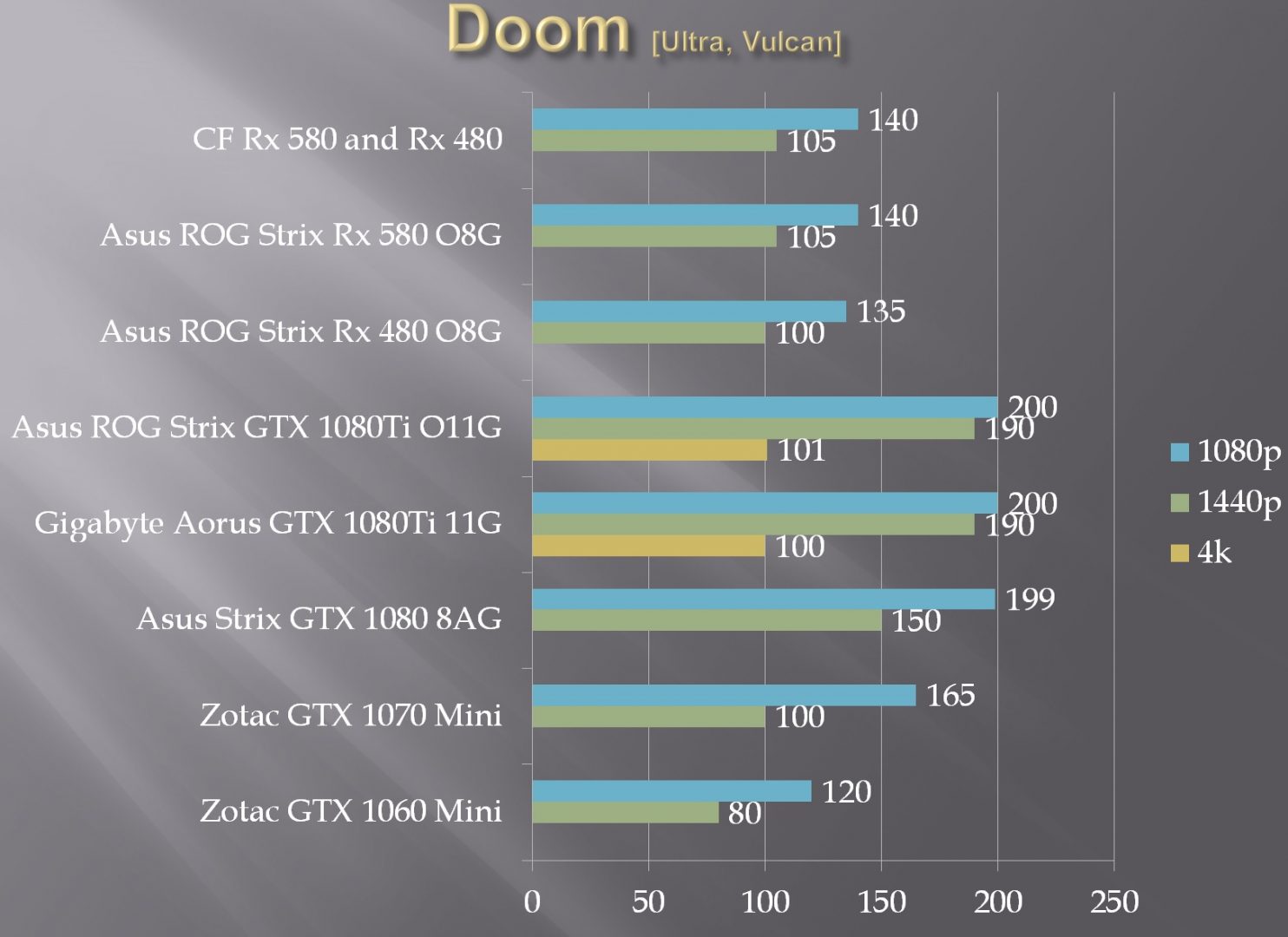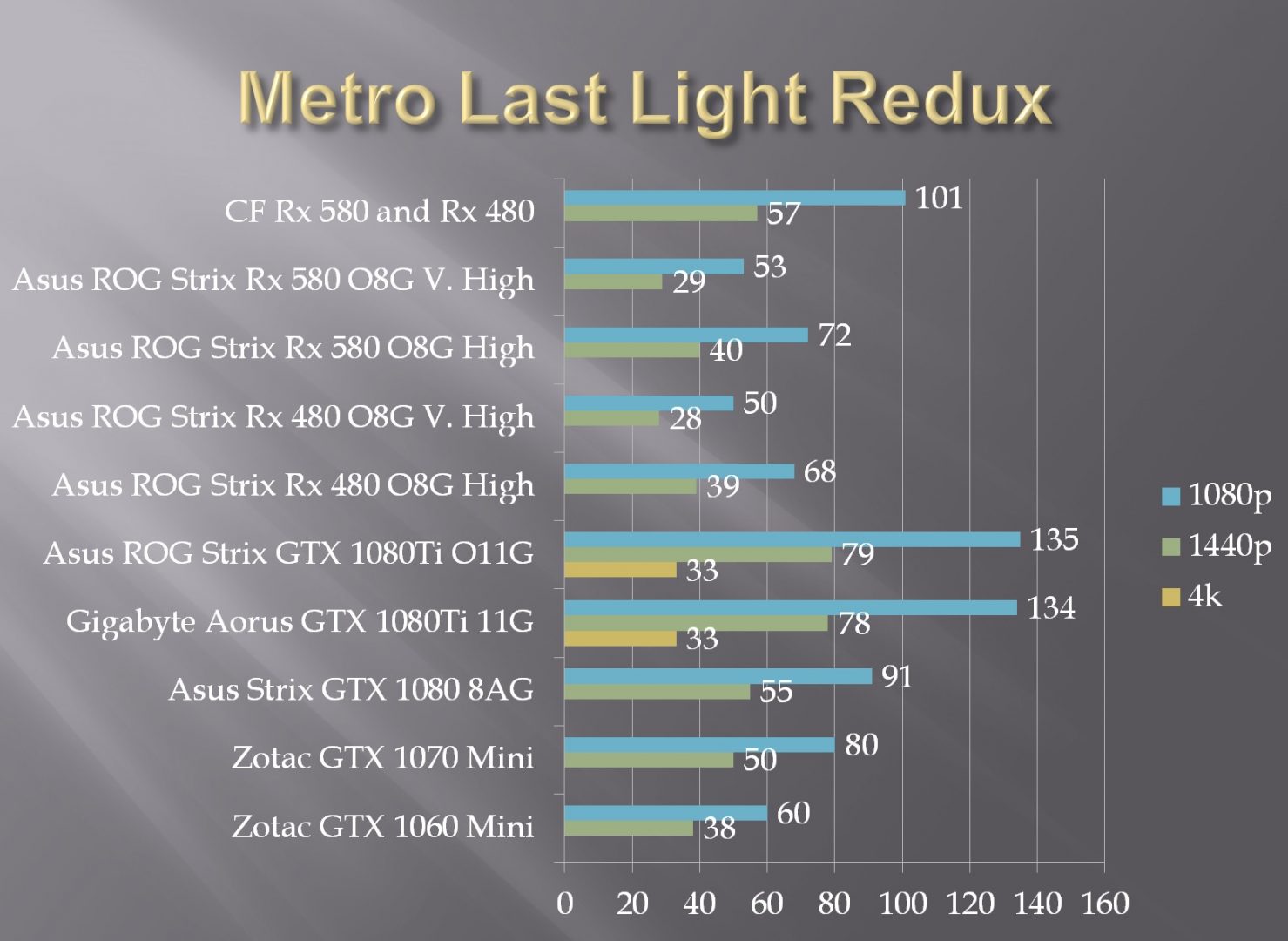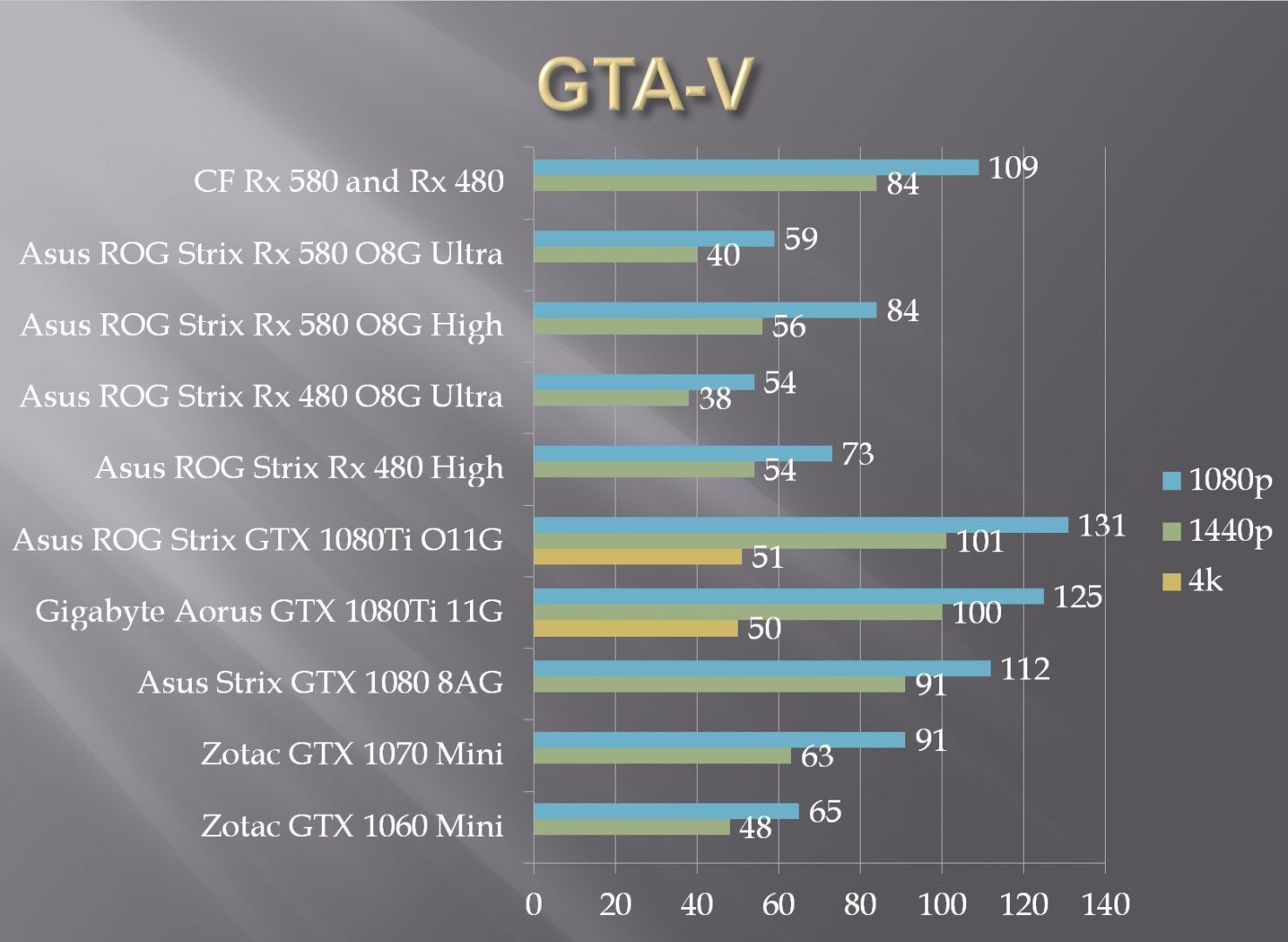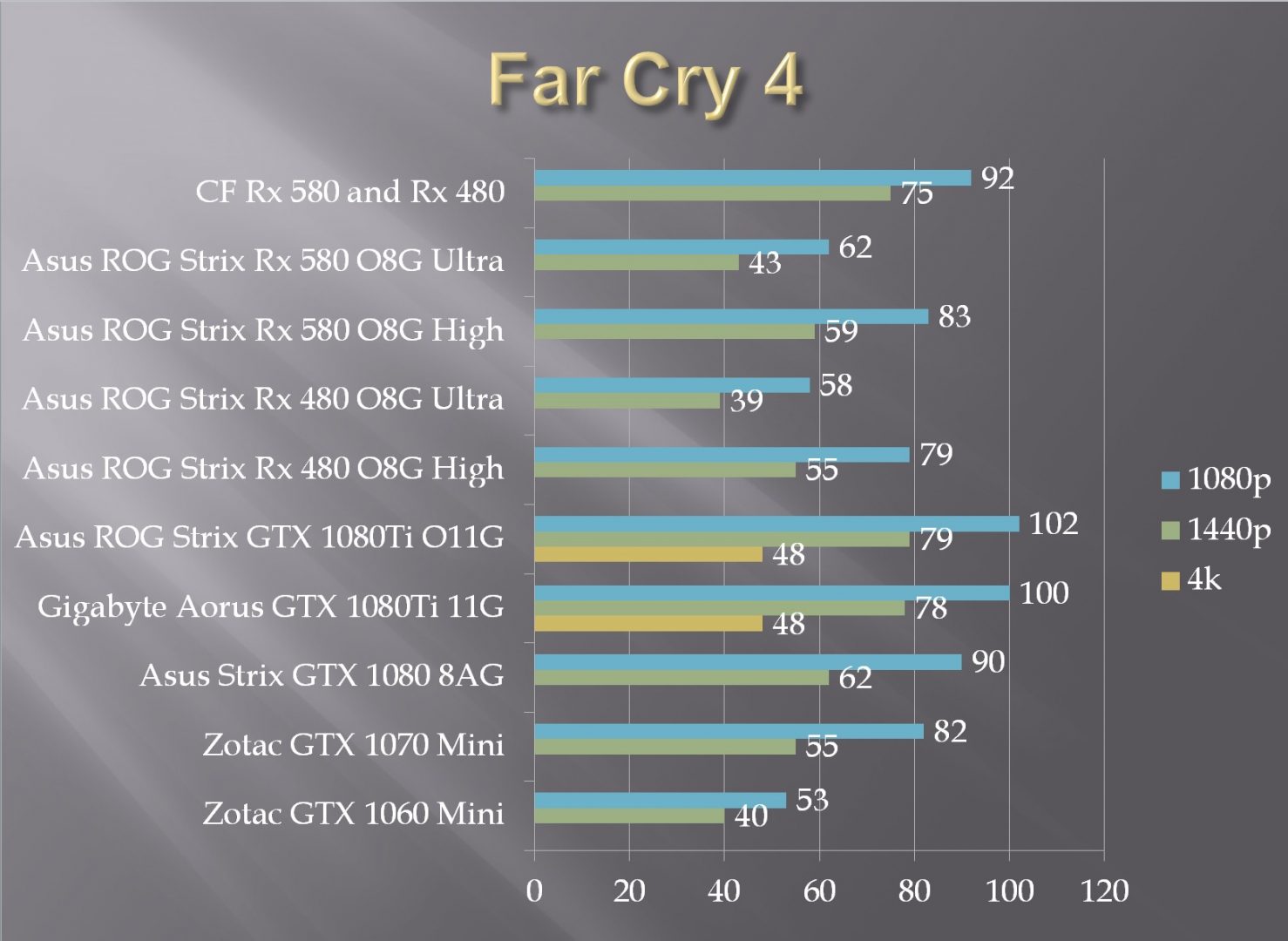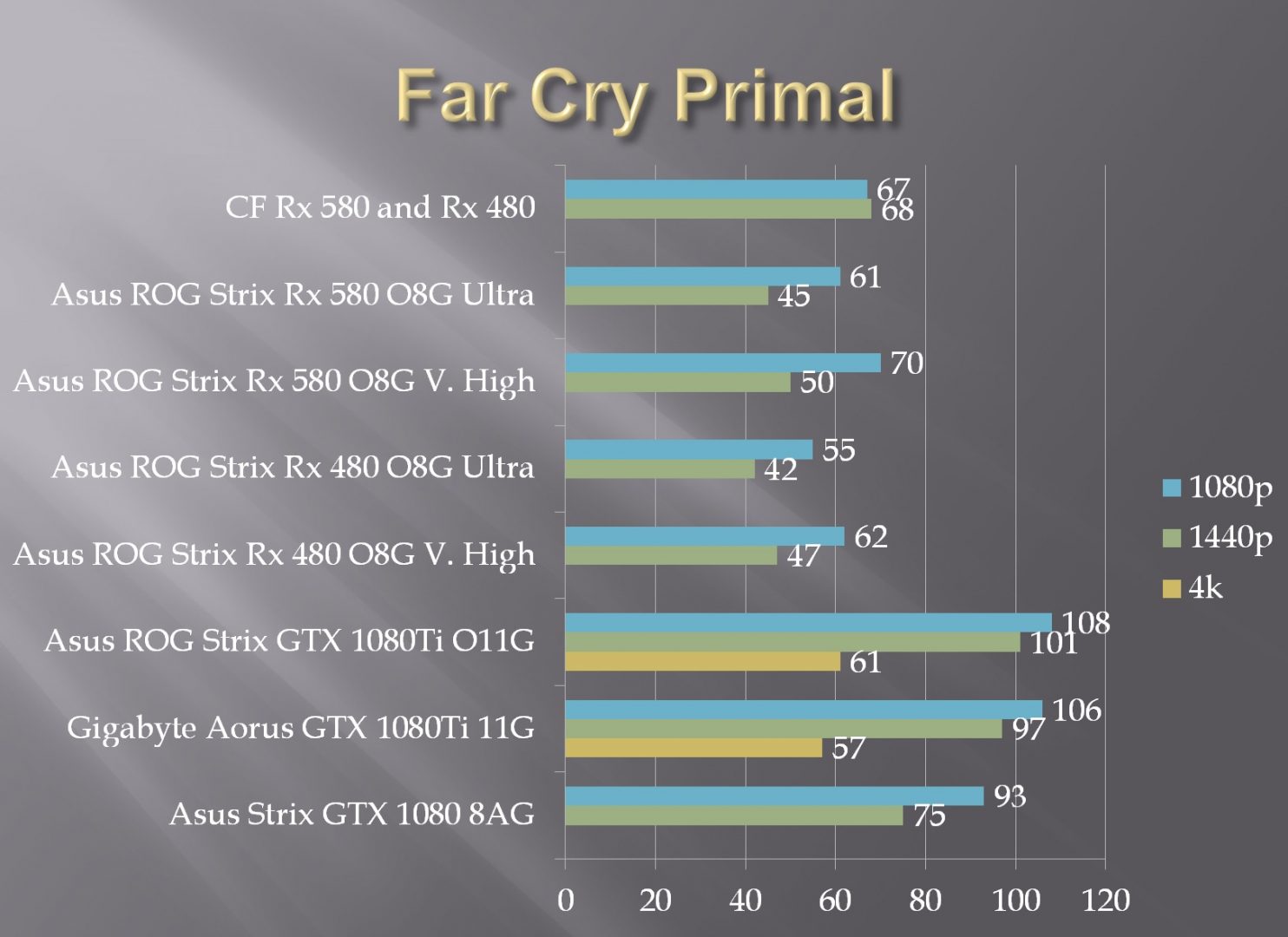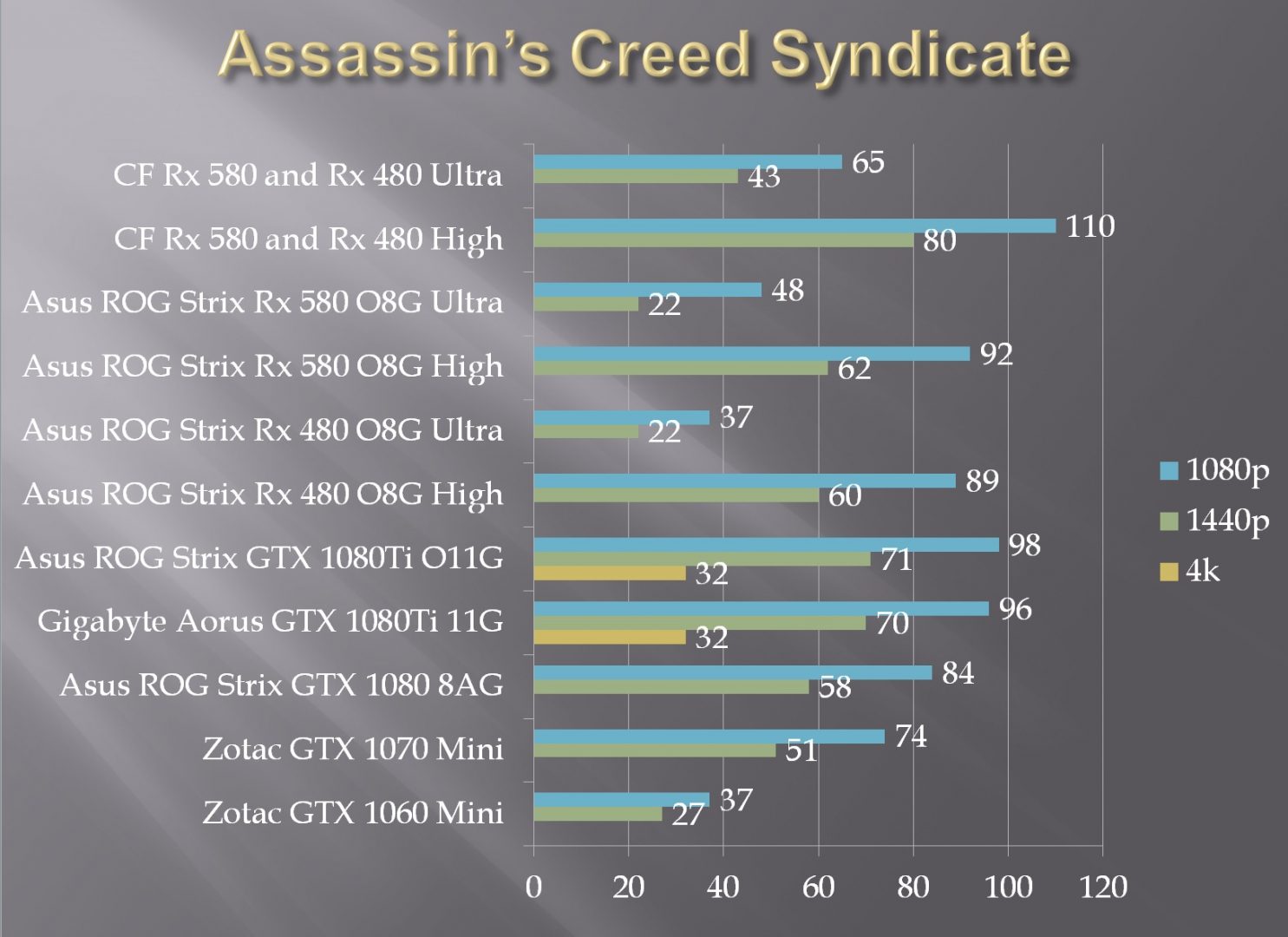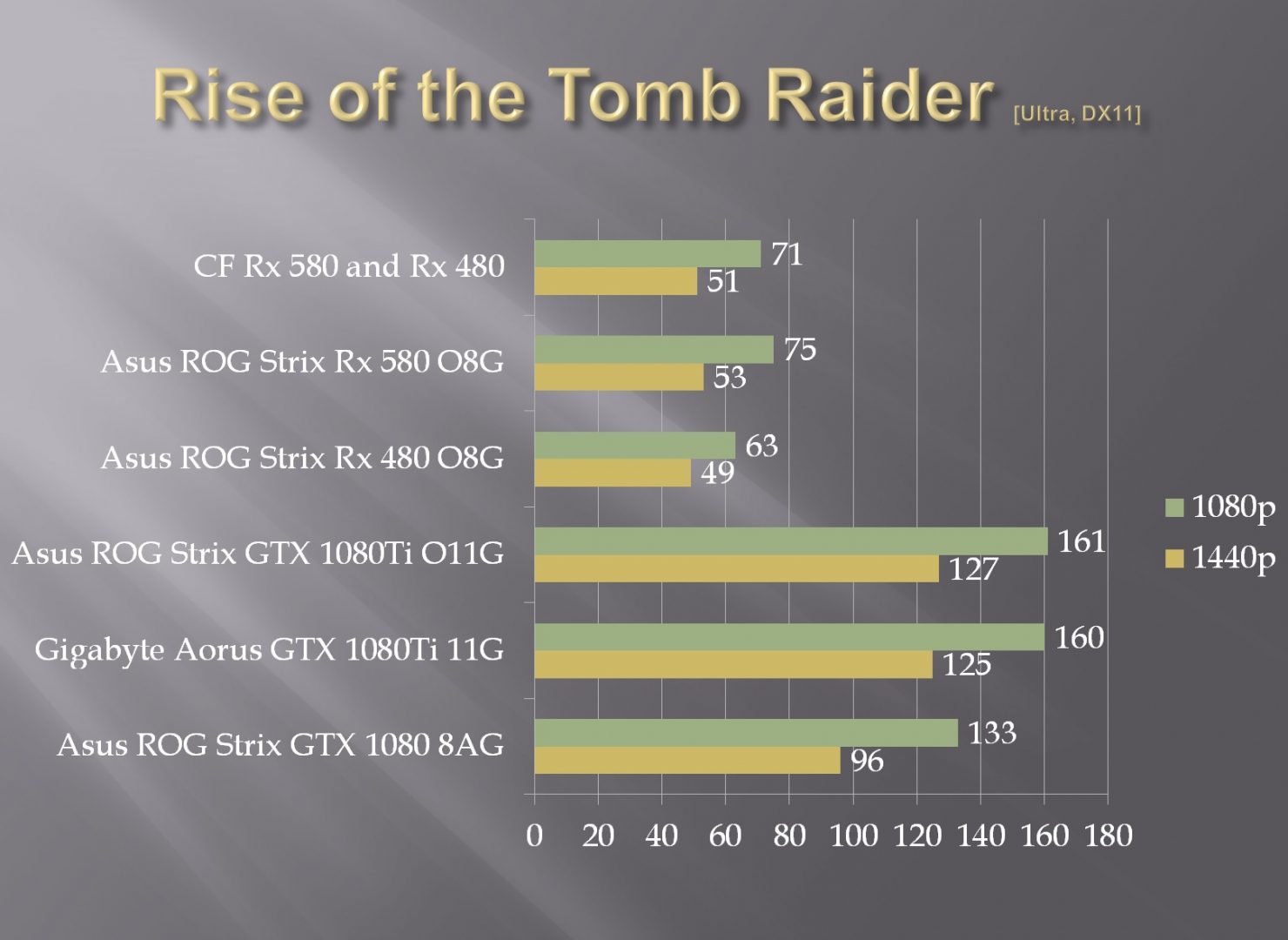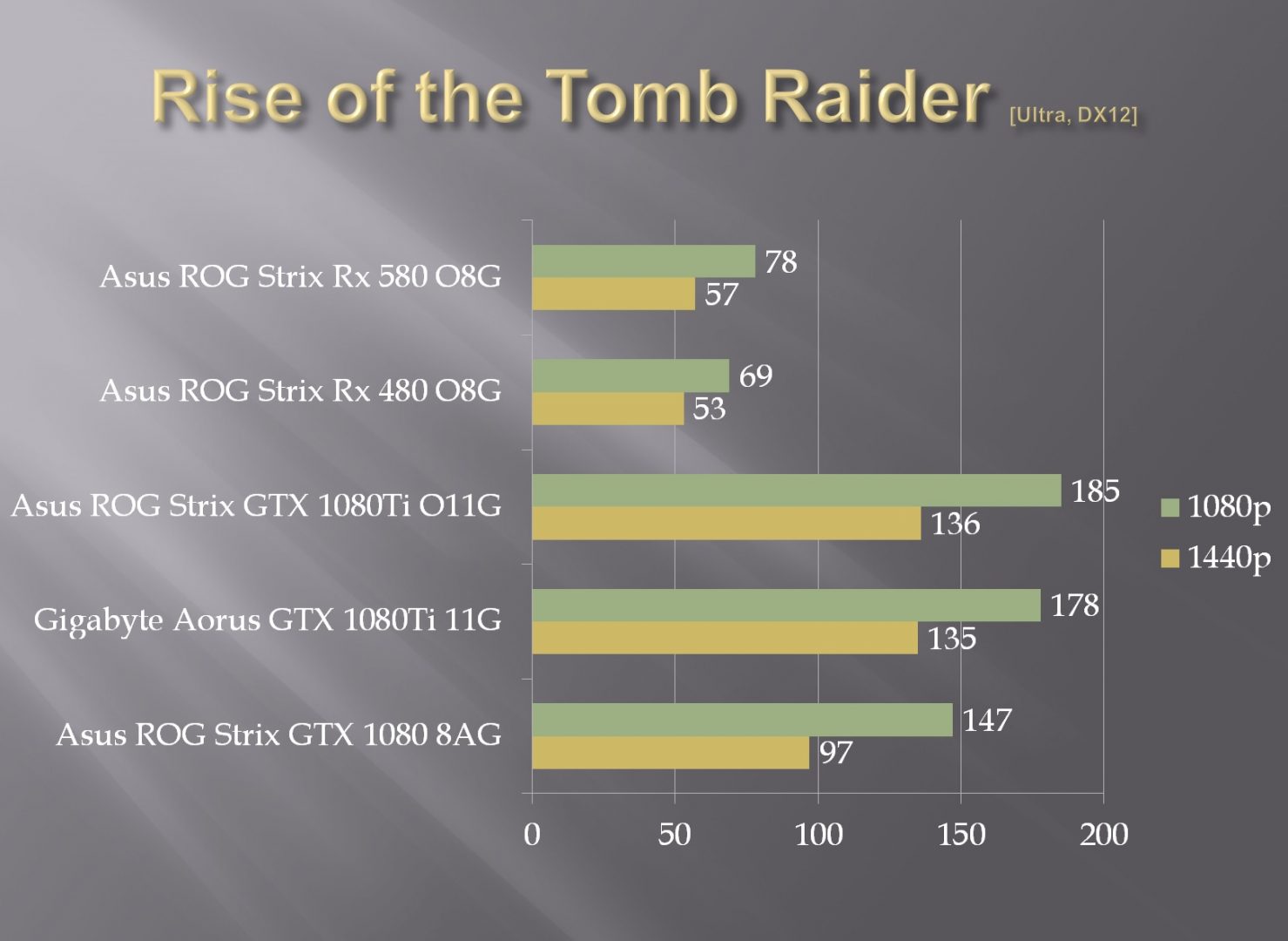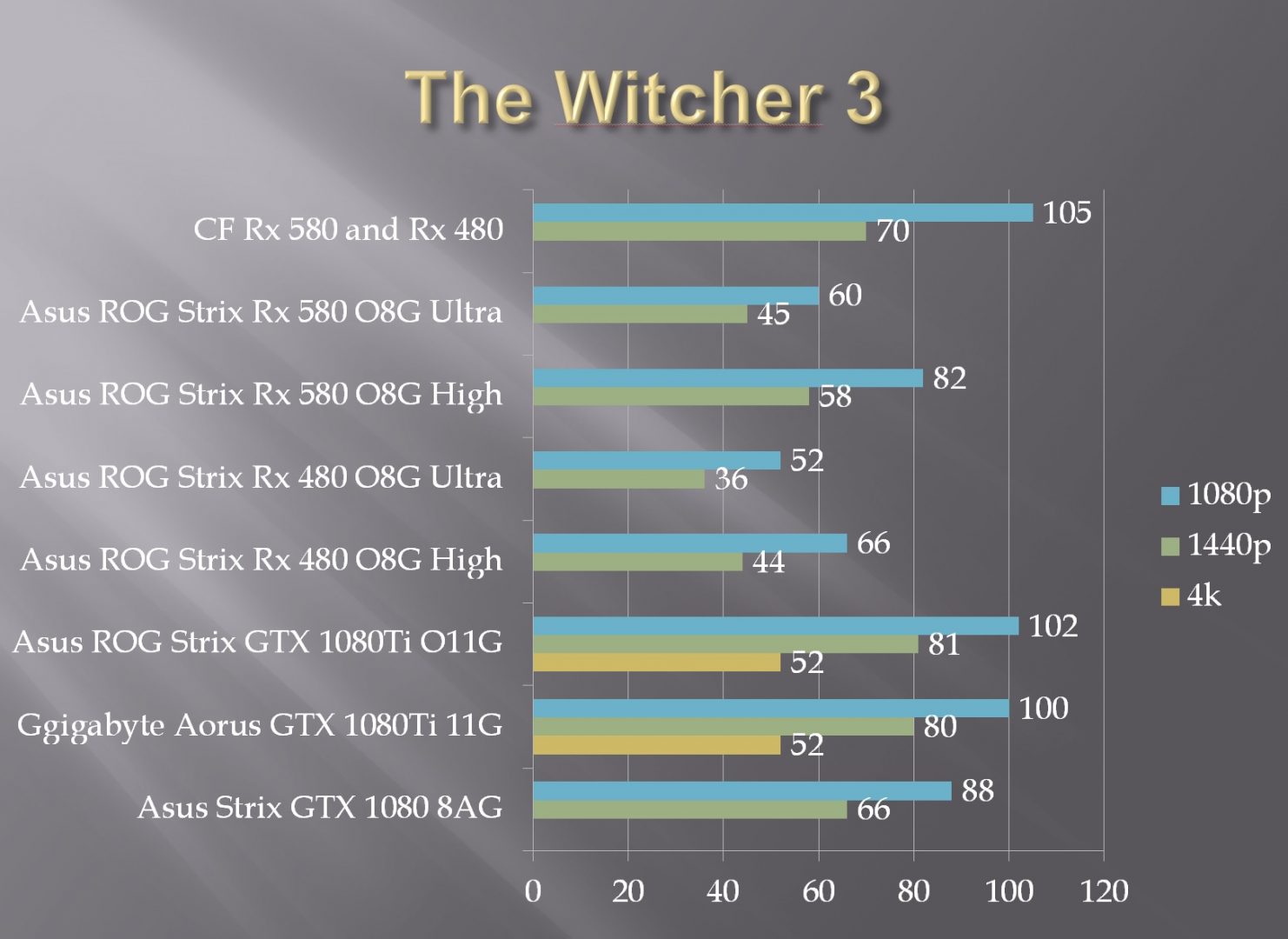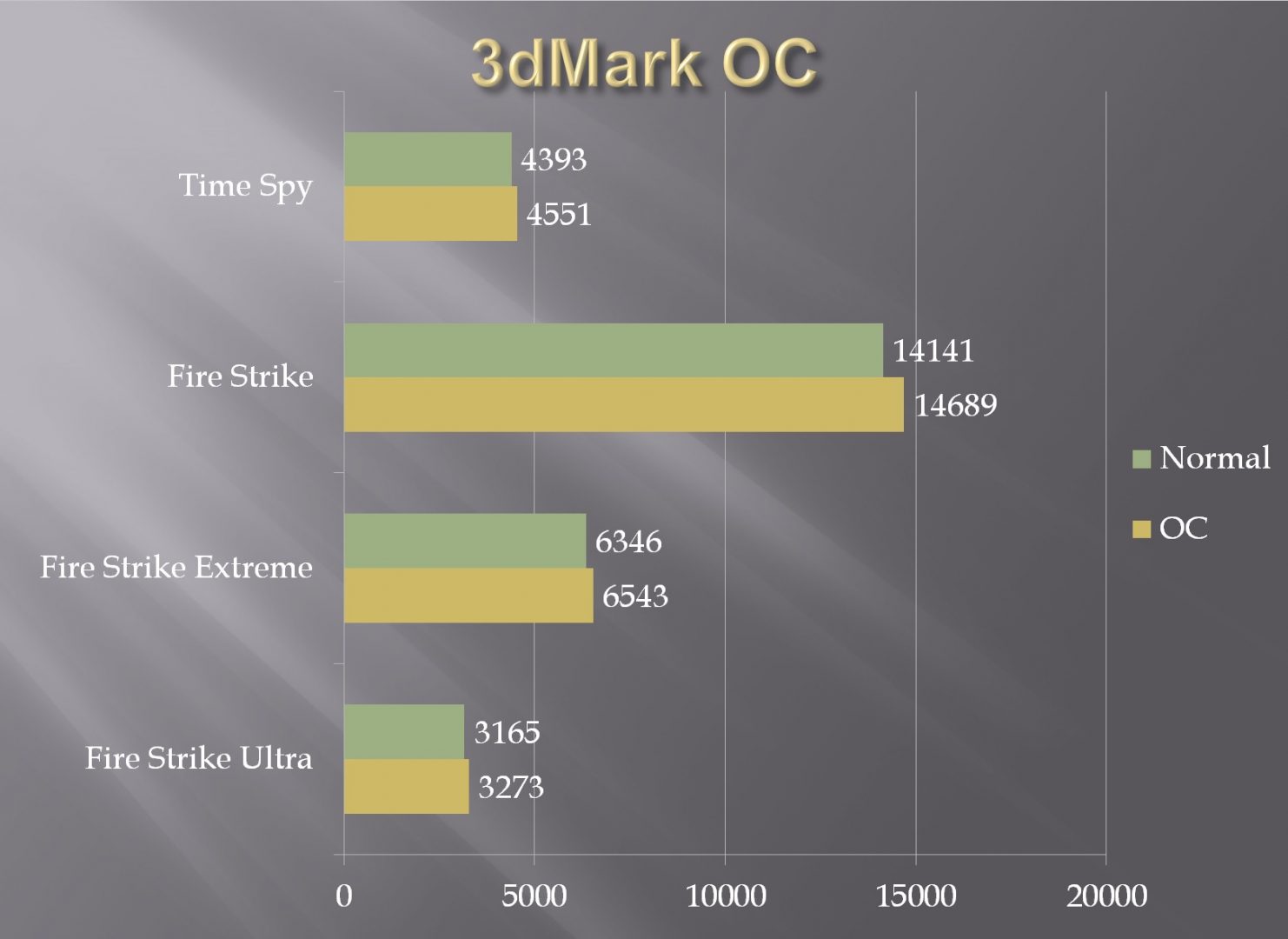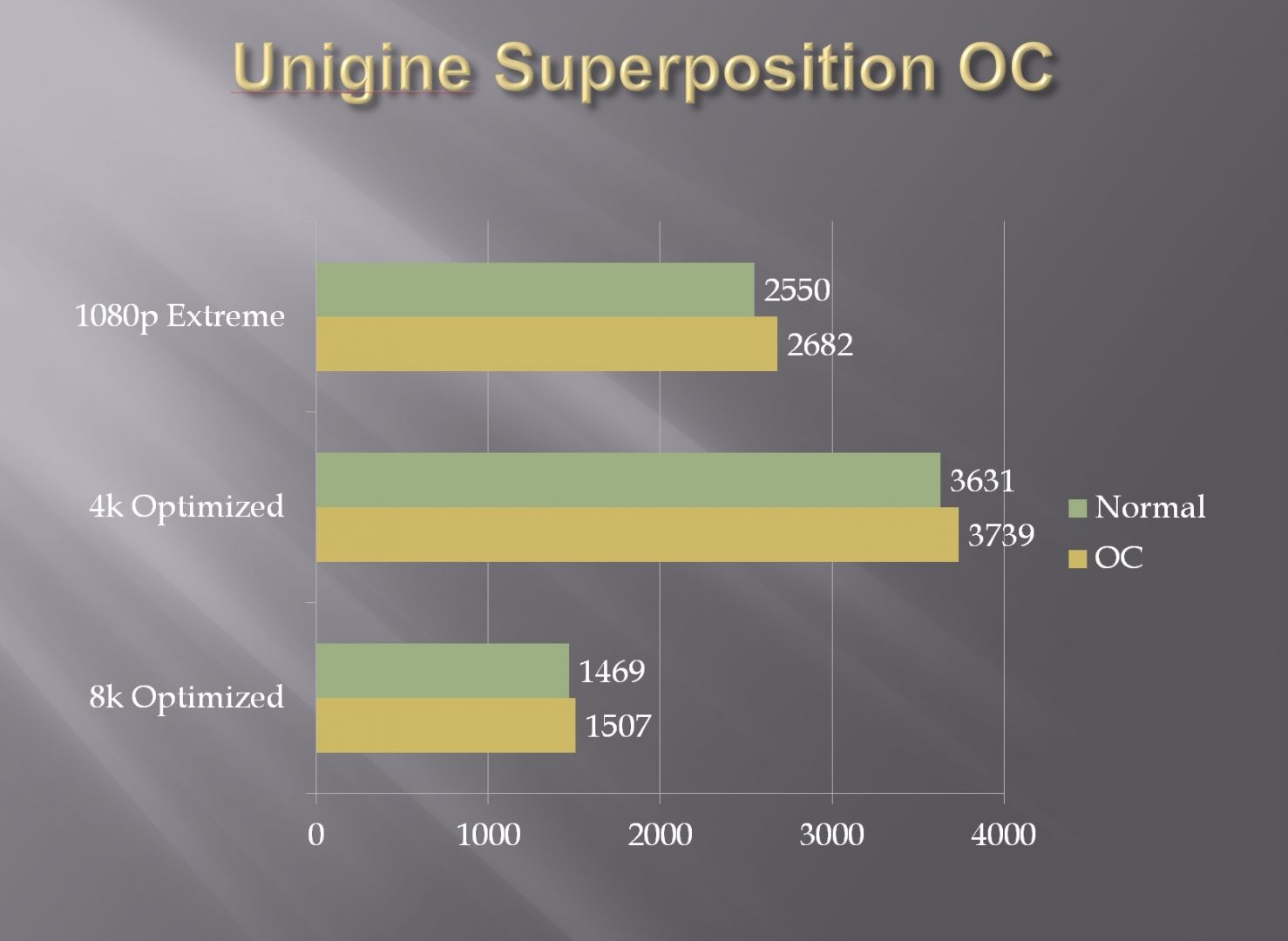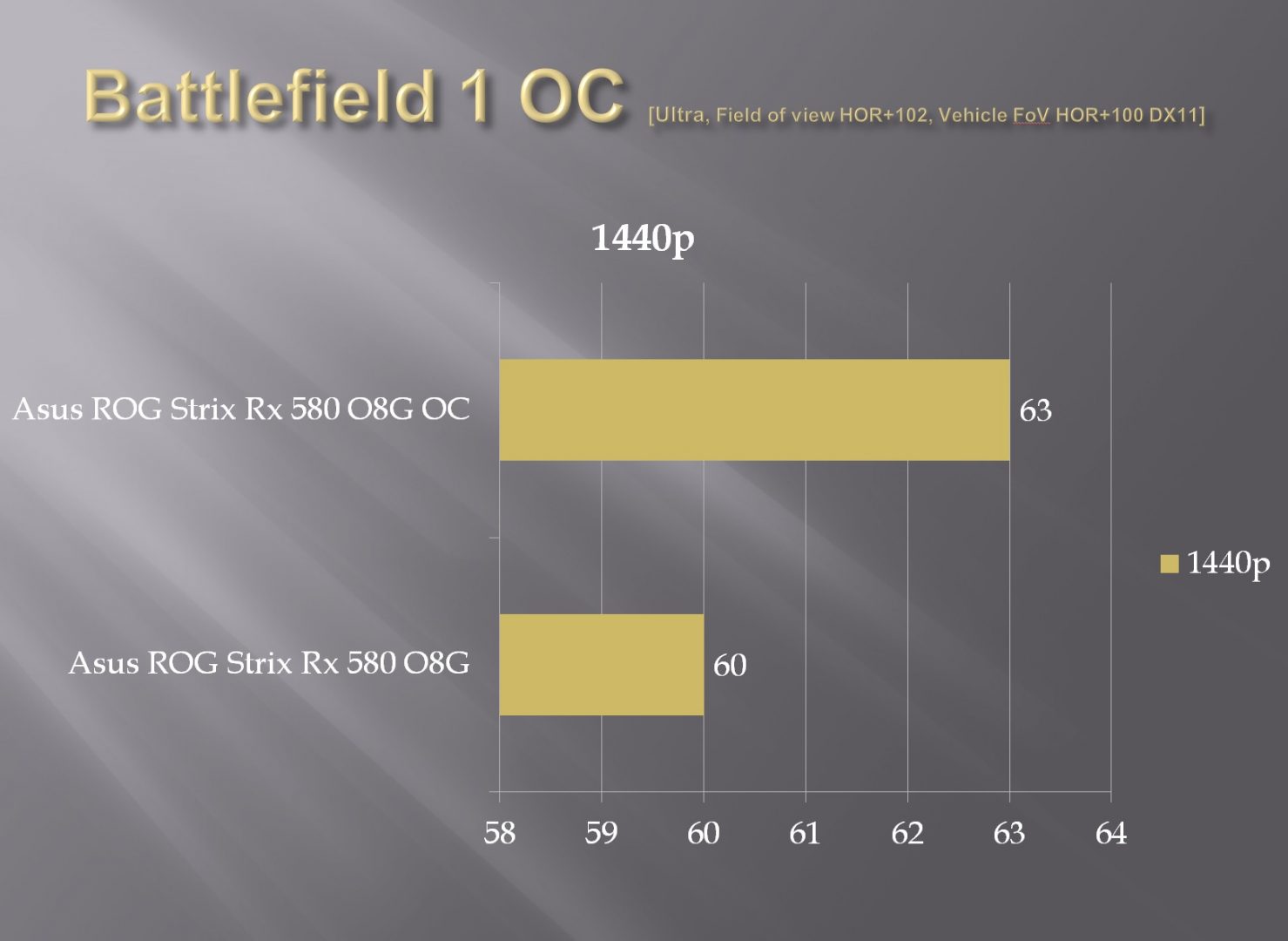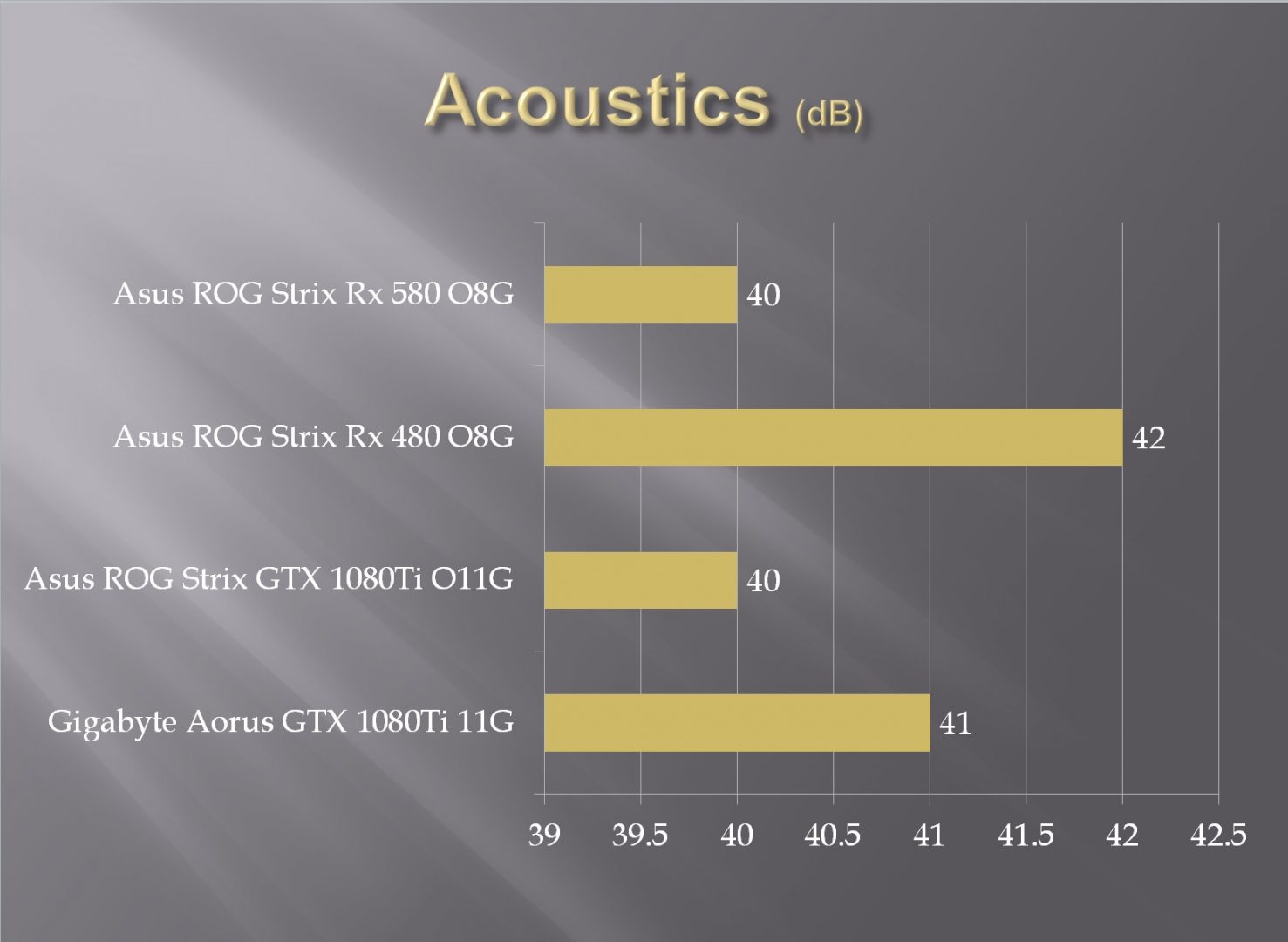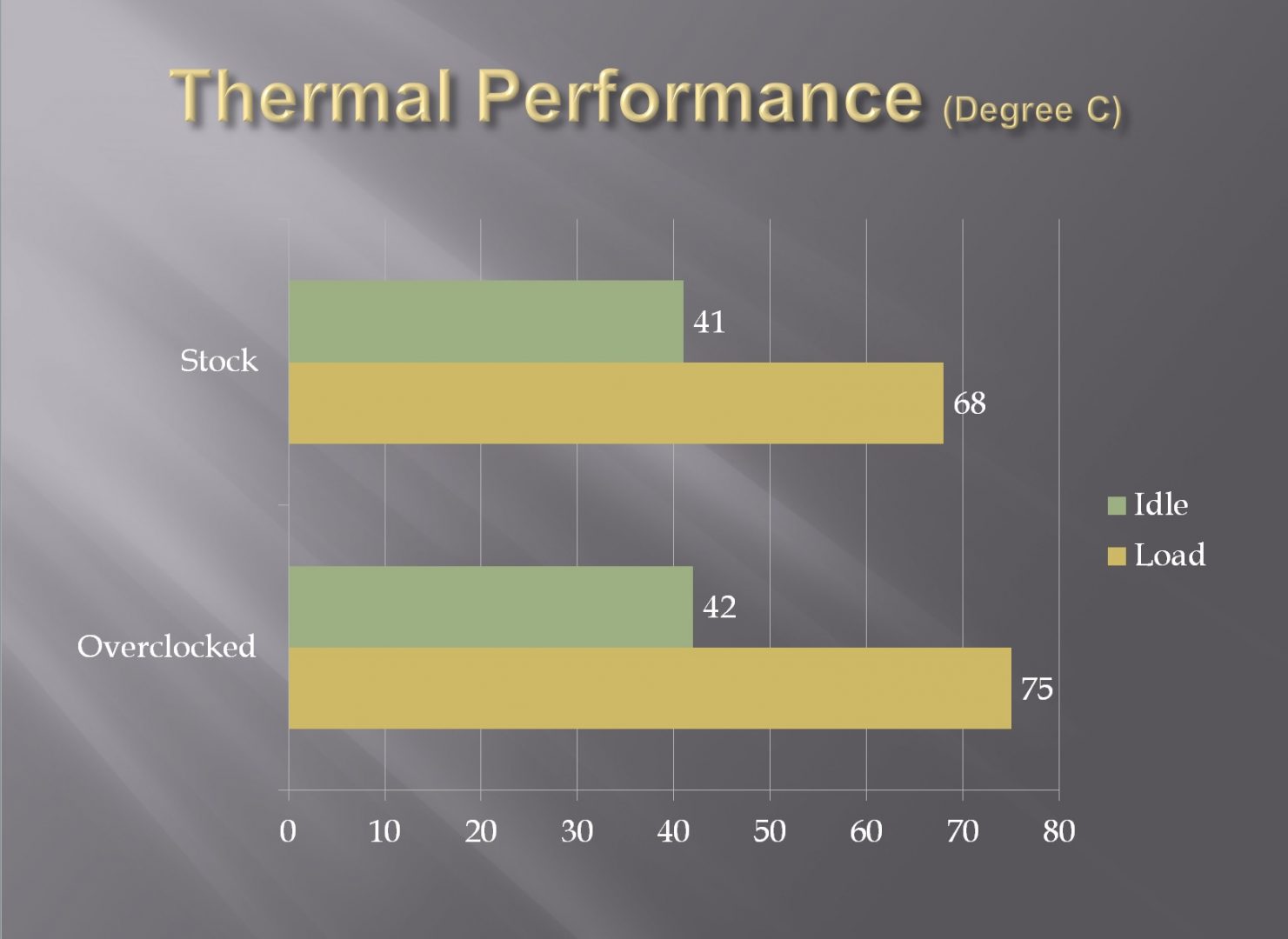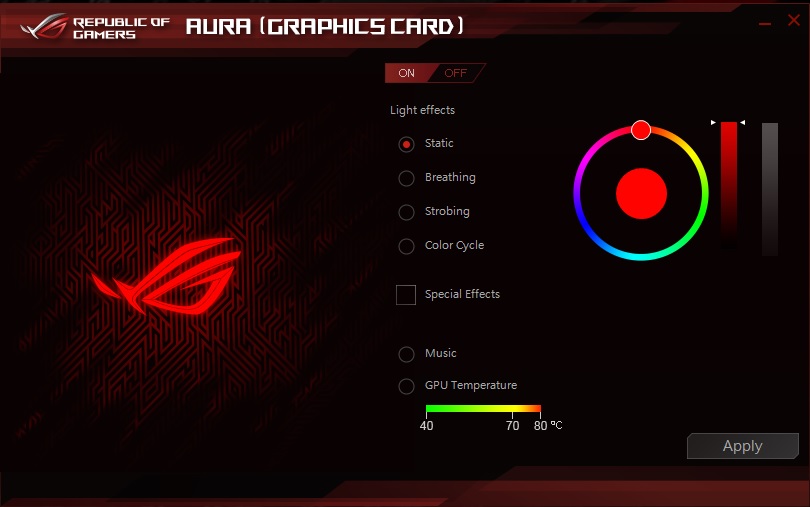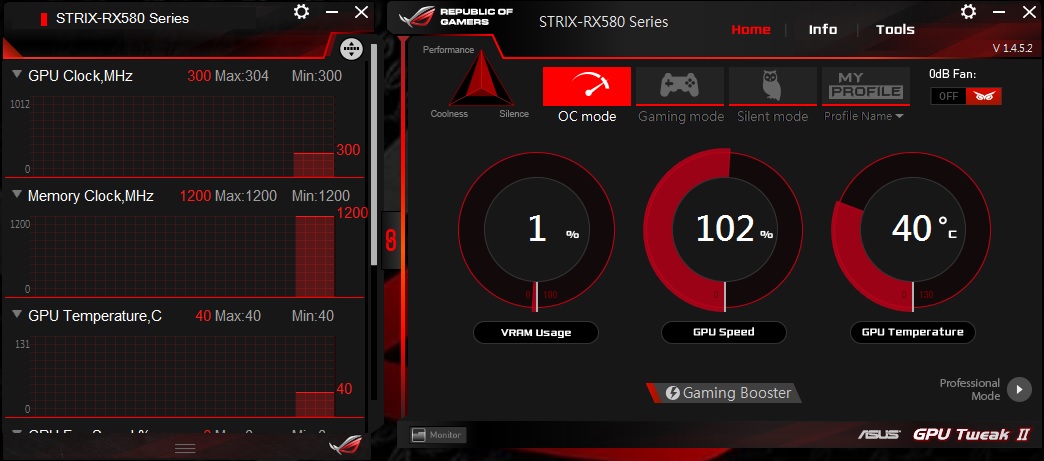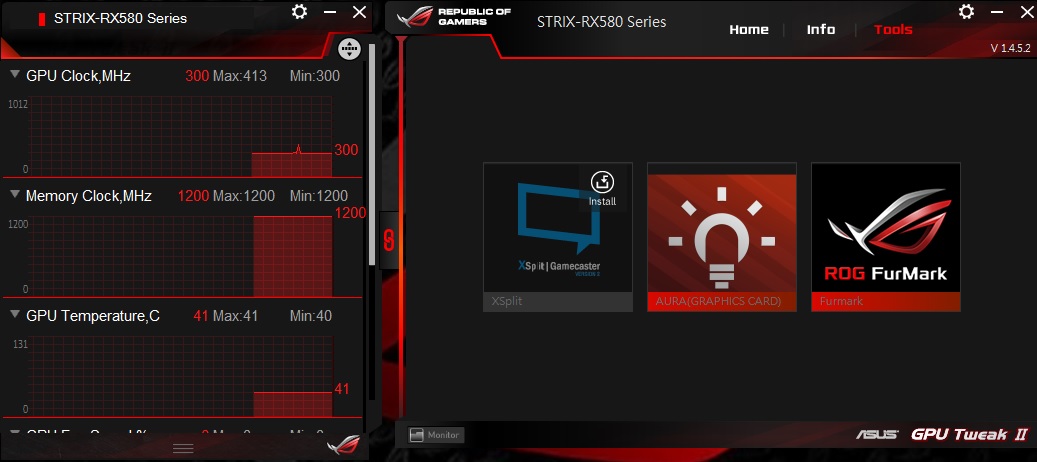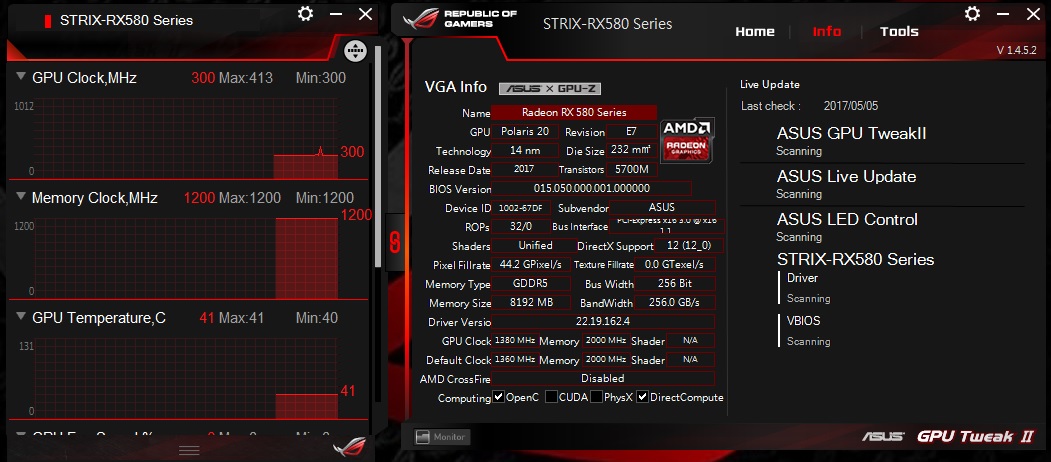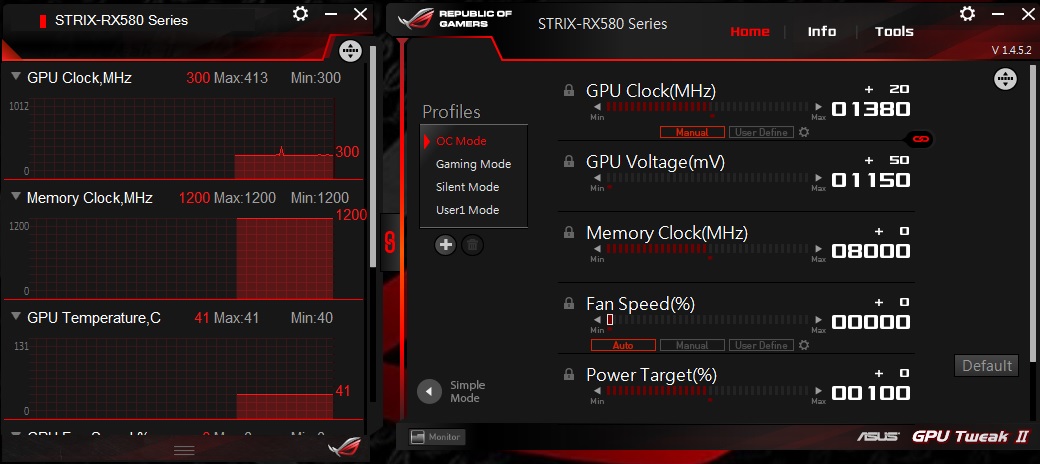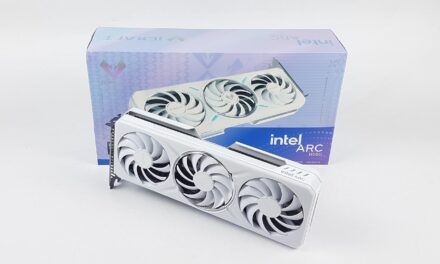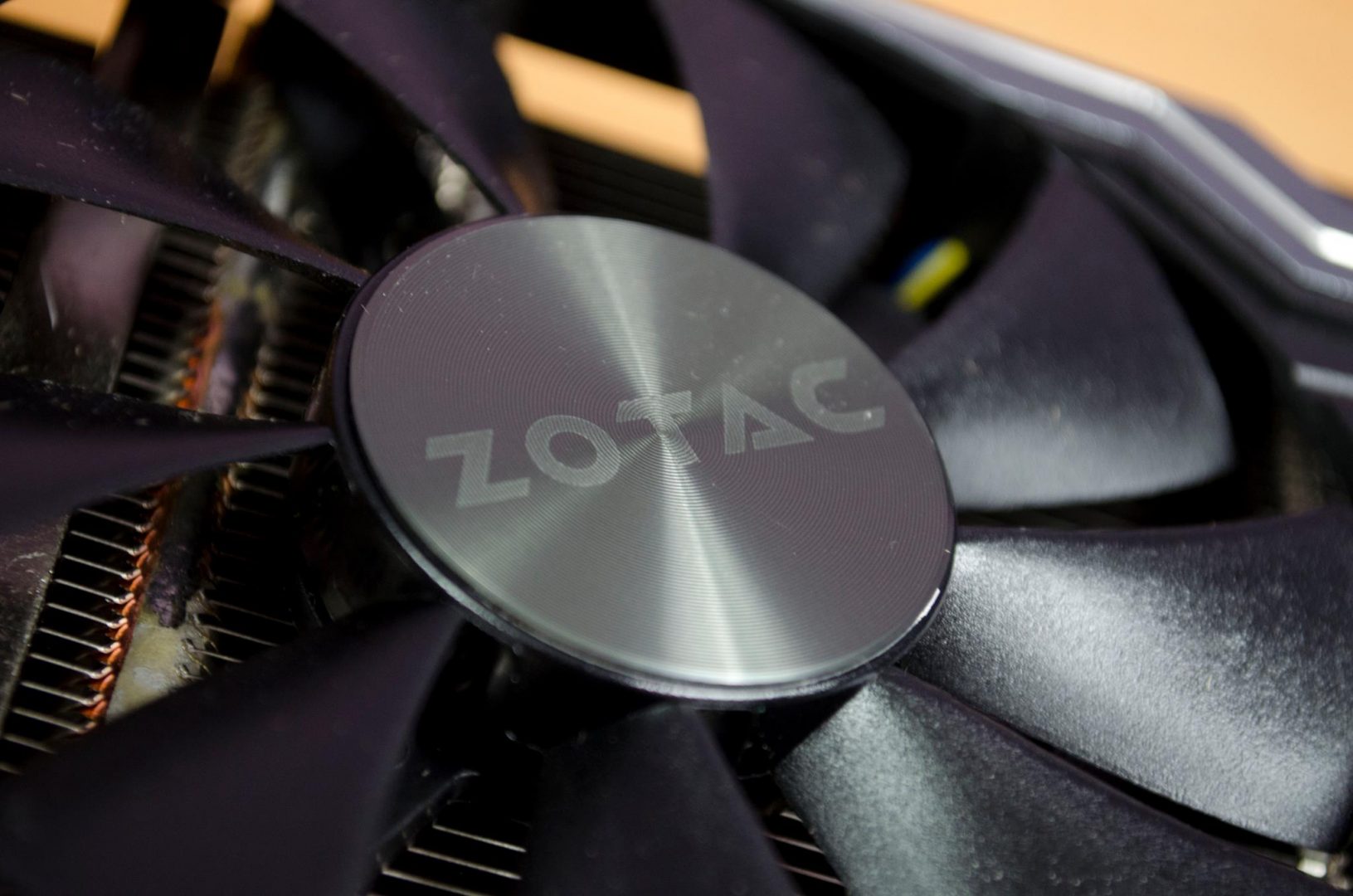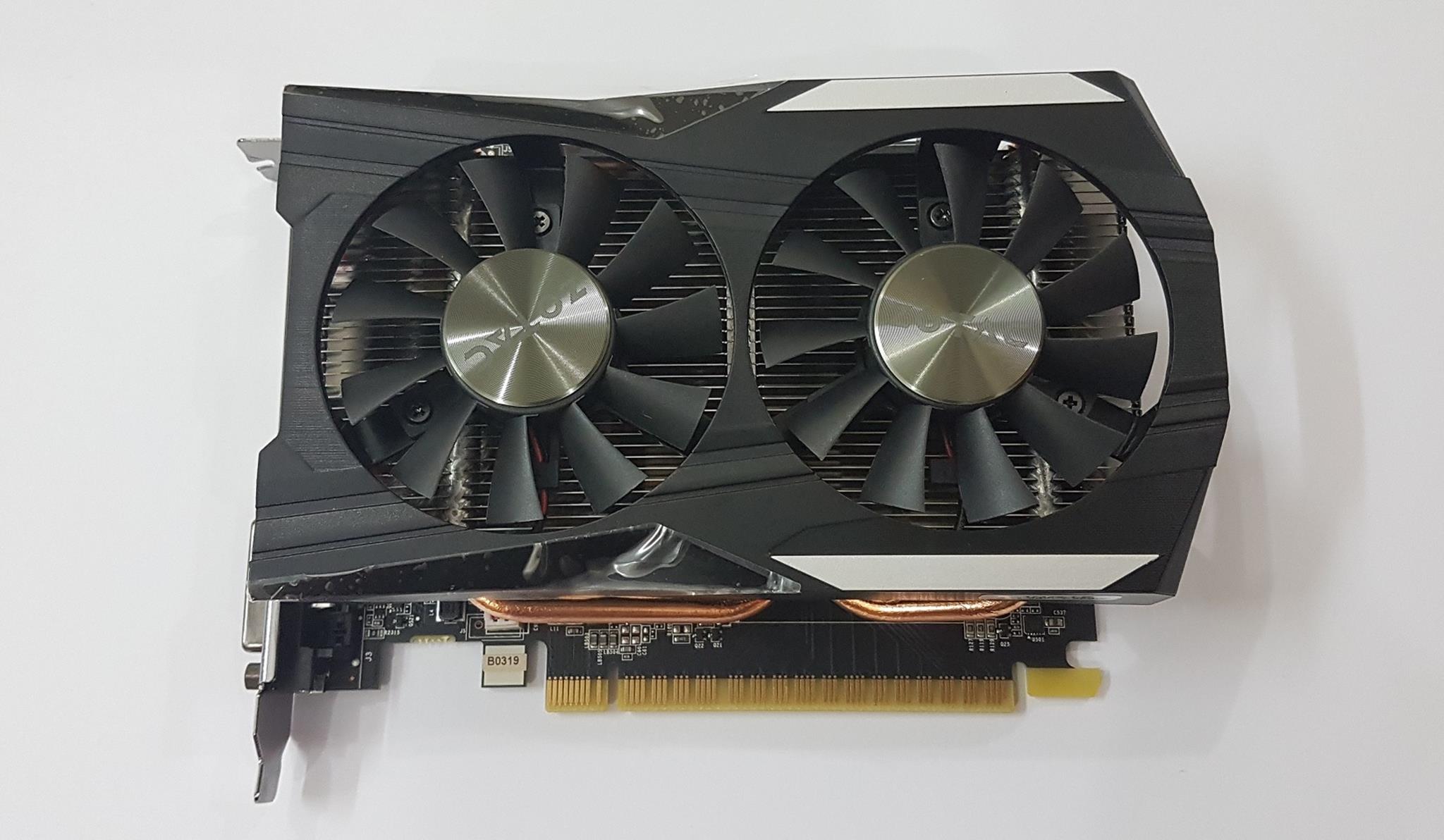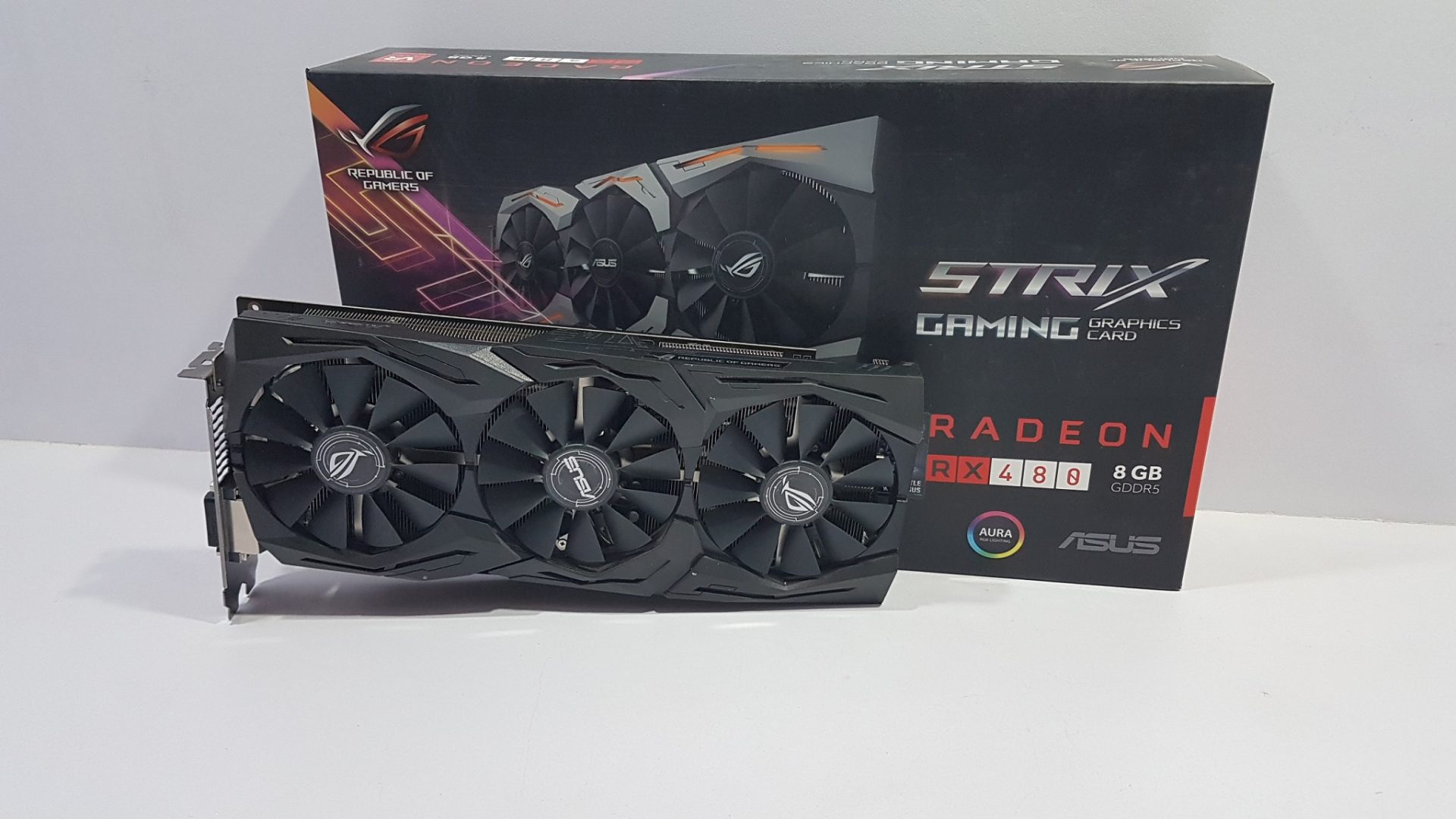
ASUS ROG Strix Rx 580 O8G Gaming OC Edition Review
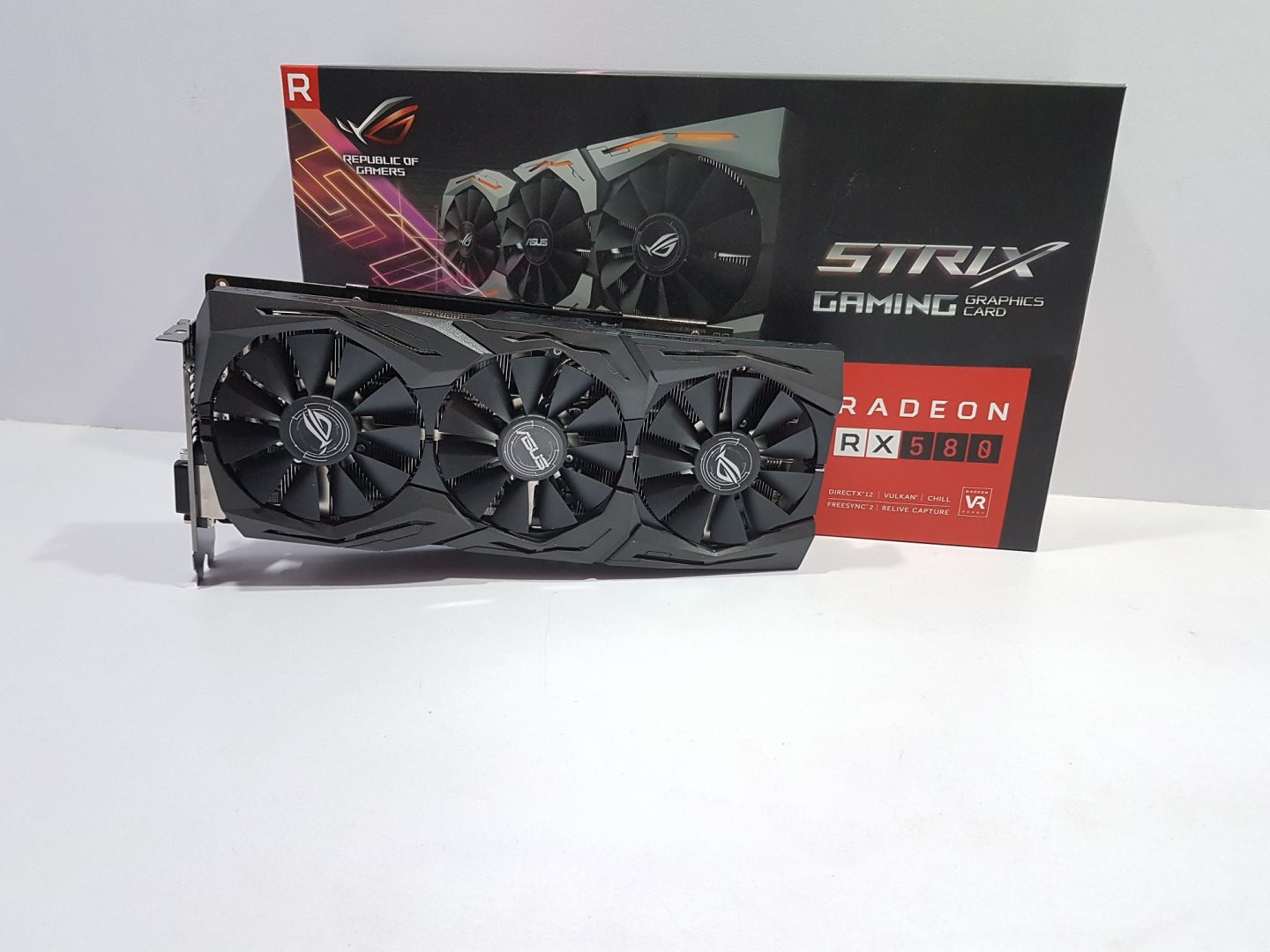
Introduction
Rx 500 series of the graphics cards are based on the AMD’s Enhanced Polaris architecture (XTX in the case of Rx 580) that combines the latest FinFET 14 process technology and AMD’s advanced power, gating and clocking technologies to deliver a superior cool and quiet gaming experience. Powerful Async shaders and new geometry capabilities enable unique support for DirectX® 12 and Vulkan™ in the best version of Graphics Core Next yet with the capability of streaming and recording your favorite games up to 4K, H.265, 60 FPS with virtually no performance impact.
Rx 480 is a 5th gen GCN architecture which comprises of 32 ROPs, 144 Texture units, 36 compute units based on 2304 stream processors clocked at 1257MHz base clock with 1340MHz boost clock with up to 6.2 TFLOPS. Video card memory is 8GB GDDR5 with 256-bit interface. We have 5.7 Billion transistors count with peak pixel fill rate of 42.880 GP/s and peak texture fill rate of 192.960 GT/s.
When it comes to PC Components, AsusTek is among one of the best names we have in the market. It was founded in 1989 in Taiwan. Ever since its foundation, Asus has seen a phenomenal growth and diversity in its business line. When it comes to Asus, the first associated name that comes to mind is ROG or Republic of Gamers. ROG brand was introduced in 2006 and it focuses on mainstream gamers/enthusiasts with products ranging from Motherboard, Graphics Cards to Peripherals. ROG is now the pinnacle of the Asus products lineup. Strix has been a new addition to the ROG lineup and here is what Asus is saying about it: “ROG Strix is the newest recruit into the Republic of Gamers. A series of specialized gaming gear designed for the rebel in all of us, Strix exemplifies ROG’s premier performance, innovative technology, and leading quality, but with its own confident and dynamic attitude. Featuring bold designs and bright colors, this exciting new series possesses a spirit of fierce individualism that charges every gaming experience with thrilling energy. ROG Strix equips players with the necessary speed and agility to dominate their game. A new generation of force has arrived. Join the Republic and experience the power of ROG Strix.”
I will be reviewing Asus ROG Strix Rx 580 O8G today. This is a first Rx 580 on our bench. This is going to be an interesting comparison as I reviewed the Asus ROG Strix Rx 480 O8G earlier and that card performed very well on our bench. I will include the Crossfire results of both the cards in this review for our readers.
Product: ROG Strix Rx 580 O8G Gaming OC Edition
Manufacturer: Asus
Price: $279.99 (at the time of the review)
Specifications
| Graphics Engine | AMD Radeon RX 580 |
| OpenGL | 4.5 |
| Video Memory | 8GB GDDR5 |
| Engine Clock | 1380 MHz (OC Mode)
1360 MHz (Gaming Mode) |
| Stream Processors | 2304 |
| Memory Clock | 8 Gbps |
| Memory Interface | 256-bit |
| Resolution | Digital Max Resolution:7680×4320 |
| Interface | DVI Output : Yes x 1 (Native) (DVI-D)
HDMI Output : Yes x 2 (Native) (HDMI 2.0) Display Port : Yes x 2 (Regular DP) HDCP Support : Yes |
| Power Connectors | 1 x 8-pin |
| Accessories | 2 x ROG Velcro Hook & Loop |
| Software | ASUS GPU Tweak II & Driver
Aura(Graphics Card) Utility |
| Dimensions | 11.73 ” x 5.28 ” x 2.07 ” Inch
29.8 x 13.4 x5.25 Centimeter |
Packing
The graphics card comes in a standard cardboard box. On the front side, we have a ROG brand name and the logo printed on the top left side. The graphics card model is printed on a red color background at the bottom right side. Asus, AURA Sync, and OC edition are printed on the bottom left side. Strix is printed in multi-color diagonally crossing from the upper left side to the bottom mid. It signifies the RGB effect on the card. Stunning picture of the graphics card is printed on the main section.
The graphics card model is printed on the top left side followed by the ROG brand name and logo. STRIX GAMING GRAPHICS CARD is printed right next to the ROG logo. There are 6 pictures highlighting the salient features like MaxContact technology, Wing-Blade IP5X certified fans, AURA SYNC etc. Product specifications are printed in white color with red background on the bottom left side followed by the VR picture.
The left side of the packing box has Minimum system requirements info printed in 14 different languages. UPS, EAN, Part No, Serial No label are printed on the right side of the box. These requirements are: –
- Minimum 500W PSU.
- PCIe Compliant motherboard.
- 8GB or higher System memory
- Microsoft Windows 7, Windows 10 (32bit or 64bit)
- 1×8-pin PCIe connectors
The right side of the box has ROG brand name and logo printed on the left side while the graphics card model no is printed on the right side.
Opening the box would reveal another container box with the STRIX printed in the middle.
Opening that container box would reveal the contents of the packing. We can see a black color container with the Asus brand name printed on the middle. This is nicely placed inside the top protective covering. This container has the User Installation guide and the installation disk.
Removing the top protective container would reveal the graphics card wrapped inside a protective antistatic sheet. Two stylish Velcro strips with Republic Of Gamers name and logo printed on them are included.
Accessories
Accessories include the installation guide, the Installation CD, Velcro Strips.
Closer Look
Asus ROG Strix Rx 580 O8G is a beautifully designed graphics card. It is a triple slot design yet with aesthetically pleasing looks and feels to it. Aura Sync adds the subtle touch when in operation and it speaks for itself. This design really complements the ROG series motherboards from the Asus. My test bench features the Asus ROG Rampage V Edition 10 and this card has complemented the looks of the motherboard very well.
Let’s dig deep in the design elements of this card and explore the mighty and the beauty of it. This card has the unique and stylish cooler shroud. The cooler shroud is made of plastic. Top and bottom cutouts on the cooler have LEDs on them which can be controlled with AURA Graphics Card software available on Asus website. The Central fan has ASUS brand name sticker pasted in white color on its fan hub whereas the other two fans have ROG Eye stickers pasted on the fan hub. With the curves, edges and grooves Asus not only has able to maintain the typical Strix looks it is known for but has given the user what could be described as one of the most stunning design.
Asus has taken a different approach with the ROG Strix Rx 580 O8G cooler design. They have increased the width of fin stack by 40% which has enabled them to have more surface area for effective heat dissipation across the complete surface. By doing that they have made the card to be effectively a 2.5 slot design. Asus is claiming this design to bring 30% more cooling and 3X quieter gaming performance.
Asus MaxContact is an industry-first GPU cooling technology that features an enhanced nickel plated copper plate that makes direct contact with the GPU. This plate is 10 times flatter than the traditional plates. MaxContact utilizes precision machining to provide a surface that makes up to 2X more contact with the GPU than traditional heat spreaders, resulting in the improved thermal transfer.
This card has 3 90mm fans with wing-blade design. The Central fan has Asus sticker pasted on the fan motor hub. The left and the right fans have ROG sticker pasted on them. These fans have an IP5X certification which means they are more dust resistant which would improve their reliability and a longer lifespan. Patented wing-blade fans delivers maximum air flow and 105% greater static pressure over the heat sink while operating at an up to 3X quieter volume than reference cards.
Innovative 0dB technology stops the fan completely when the GPU temperature remains below a defined thermal limit, letting you enjoy light gaming in complete silence. Please note that thermal limit would vary from model to model and brand to brand. 55C is the thermal limit for the Asus ROG Strix Rx 580 O8G.
Let’s take a look on the top side of the graphics card. STRIX is printed on the lower left part of the shroud. Fins are straight not angular as can be seen from the fin stack. Shroud is not fully covering the fin stack which is a must for effective heat dissipation. “Republic of Gamers” brand name and logo are on the top left side of the shroud. They have LED underneath and light up under operation.
The card requires one 8-pin power connector to power it up. The power connector has LED beneath it to indicate their status. Static white color would mean the normal power. Red color would indicate the power related issue.
Let’s have a look at the top front side of the graphics card. Shroud end is not fully covering the heat sink. Heads or terminating ends of the 5 heat pipes are visible. Fin stack run parallel in length to the PCB. Underneath we have two PWM fan headers. ASUS FanConnect II features two 4-pin, hybrid-controlled headers that can be connected to both PWM and DC system fans for optimal system cooling. The connected fans reference both the GPU and CPU, operating automatically based on the one with the higher temperature. One fan power connector and the RGB LED power connector are visible on the left side.
This end of the shroud has extended over the PCB and the heat sink which adds to the looks of the card from the front side and gives the impression of one complete design.
On the back side of the graphics card, we have a same metal back plate as has been on the Rx 400 series cards. It has printed lines in a pattern to signify Strix concept. We’ve large size ROG Eye in white background. This section is implemented with RGB LED and really adds to the cool looks of the card when in use. We can see one 8-pin power connector. There are what seem to be soldered overclocking tweaking points right next to the power connectors which are labelled from the inside or on the front side of the PCB. One of the screws on the GPU bracket is covered with the white sticker. Peeling or tearing that would void the warranty.
The rear side has the IO panel for the output. We have two HDMI ports, two Display Ports, and a DVI-D port. This configuration allows the user enjoy immersive virtual reality experiences anytime without having to swap cables by having a VR Device connected with other displays at the same time. Backside implementation allows the better cable management as well.
The bottom side of the card clearly shows the two fin stacks on the cooler. Thermal pads have been used to the possible point of contacts between PCB and the cooler. PCB color is black. This card has 7+1 power phases using Super Alloy Power II components. These components would enhance the efficiency, reduce the power loss and would achieve sustained thermal levels.
All ASUS graphics cards are now produced using Auto-Extreme Technology, an industry-exclusive, 100% automated production process that incorporates premium materials to set a new standard of quality. Auto-Extreme Technology ensures consistent graphics card quality as well as improved performance and longevity. This new manufacturing process is also environmentally friendly, eliminating harsh chemicals and reducing power consumption by 50%.
Test System and Methodology
Following test bench setup was used to test the performance of the graphics card:
- Intel i7 6850k
- Asus Rampage V Edition 10
- Corsair Vengeance Red LED 8x8GB @ 2666MHz
- Reeven Justice RC-1204
- Corsair AX1200i
- Samsung 840 EVO 250GB SSD for OS
- Samsung 840 EVO 1TB SSD for Steam Games
- WD Black 6TB for Origin and Uplay games
Previously, Battlefield 4, Call of Duty Black Ops 3 and Gear of Wars 4 were the part of the test games. They have been dropped from this test and onwards. Metro Last Light Redux will continue to be featured as this game based on its rich environment and taxing effects on the graphics card are handy to measure the performance of any given graphics card. Following games have been tested: –
- Battlefield 1
- DOOM
- Grand Theft Auto V
- Metro Last Light Redux
- Far Cry 4
- Far Cry Primal
- Assassin’s Creed Syndicate
- The Witcher 3
- Rise of the Tomb Raider
Microsoft Windows 10 x64 version 1607 was used. AMD Crimson drivers 17.4.4 were used. MSI Afterburner 4.3.0 was used to monitor the FPS. The action was used in Battlefield 1 as it was the only monitoring software that was working with this game in DX12 mode. All other apps were crashing the game. Game settings were set from within the games. Battlefield 1 and the Rise of the Tomb Raider were tested in DX11 and DX12 modes. All the reported frame rates are average FPS.
Following synthetic benchmarks were used:
- 3dMark
- Unigine Superposition
Previously Unigine Heaven and Valley were a part of our testing but they have been dropped and only superposition will be featured from onwards.
CF
I was able to create Crossfire between the Asus ROG Strix Rx 580 O8G and the Asus ROG Strix Rx 480 O8G. CF operated at 1400MHz. Both cards were overclocked to match 1400MHz clock.
Performance and Benchmarks
3dMark
The Asus ROG Strix Rx 580 O8G achieved 3.6% performance boost over the Asus ROG Strix Rx 480 O8G while the Crossfire (CF) results are very impressive.
The Asus ROG Strix Rx 580 O8G achieved only a 2.8% performance boost over the Asus ROG Strix Rx 480 O8G. Crossfire (CF) results are again impressive.
Unigine Superposition
The Unigine Superposition does not support Crossfire (CF) out of the box. Crossfire (CF) profile needs to be activated in the Radeon settings.
The Asus ROG Strix Rx 580 O8G achieved 3% performance boost over the Asus ROG Strix Rx 480 O8G. Crossfire (CF) results are impressive.
Battlefield 1 DX11
The Asus ROG Strix Rx 580 O8G achieved 7% performance boost over the Asus ROG Strix Rx 480 O8G. Overall scaling was better in this game under DX11.
Battlefield 1 DX12
The Asus ROG Strix Rx 580 O8G achieved 3% performance boost over the Asus ROG Strix Rx 480 O8G. Crossfire (CF) results could not be achieved as the game crashed on every attempt to measure the performance.
DOOM
DOOM was tested using Vulcan API and Ultra settings using TSSAA8FX. The Asus ROG Strix Rx 580 O8G achieved 3.7% performance boost over the Asus ROG Strix Rx 480 O8G. I observed no scaling in this game.
Metro Last Light Redux
The Asus ROG Strix Rx 580 O8G achieved 6% performance boost over the Asus ROG Strix Rx 480 O8G.
Grand Theft Auto – V
Grand Theft Auto – V was tested with maxed out settings on Ultra with 4x MSAA and on High settings with 2x MSAA. The Asus ROG Strix Rx 580 O8G achieved 9% performance boost over the Asus ROG Strix Rx 480 O8G in the Ultra settings while 15% performance boost in the High settings.
Far Cry 4
This game was tested with maxed out settings and 4x MSAA at Ultra and 2x MSAA at High settings. The Asus ROG Strix Rx 580 O8G achieved 6.8% performance boost over the Asus ROG Strix Rx 480 O8G in the Ultra settings while 5% performance boost in the High settings.
Far Cry Primal
The Asus ROG Strix Rx 580 O8G achieved 10.9% performance boost over the Asus ROG Strix Rx 480 O8G in the Ultra settings while 12.9% performance boost in the High settings. Scaling was tested on the Ultra settings in this game. Though scaling is very marginal but it is better than the negative scaling which I observed with Nvidia’s GeForce GTX 1080Tis SLI.
Assassin’s Creed Syndicate
The Asus ROG Strix Rx 580 O8G achieved 9% performance boost over the Asus ROG Strix Rx 480 O8G. Scaling was better on 1440p than on the 1080p.
Rise of the Tomb Raider DX11
The Asus ROG Strix Rx 580 O8G achieved 19% performance boost over the Asus ROG Strix Rx 480 O8G. I observed negative scaling on this game.
Rise of the Tomb Raider DX12
The Asus ROG Strix Rx 580 O8G achieved 13% performance boost over the Asus ROG Strix Rx 480 O8G. Under DX12 game crashed continuously with Crossfire (CF) enabled hence I was not able to record any performance measure with the Crossfire (CF).
The Witcher 3
The Asus ROG Strix Rx 580 O8G achieved 15% performance boost over the Asus ROG Strix Rx 480 O8G. Scaling was better and the Crossfire (CF) beats the single GeForce GTX 1080Ti score on our bench.
Overclocking and Software
Overclocking
I have initially faced difficulties with the driver 17.4.4. My every attempt on overclocking the card failed initially. Every time I was met with the message that WattMan settings have been restored to their default due to an unexpected system error. I suspected the driver for this behavior and downgraded to 17.4.3. With 17.4.3 there was no longer that particular message but apps like 3dMark and Unigine’s Superposition were randomly crashing. The third driver that was tested was 17.10. This driver was downloaded from the Asus website. I was met with the same fate. The card was not overclocking beyond 1410MHz on initial attempts. Where overclocking was successful the over performance of the system lowered indicating the unstable overclocks.
Driver 17.4.4 was installed again. Display Driver Uninstaller (DDU) was used every time drivers were needed to be removed. With second time installation of the 17.4.4 card was overclocked to the 1440MHz. This was the max that could be achieved which left me with the impression that silicon lottery is still in effect and my review sample got poor silicon. As this card has 7+1 power phases, I don’t see any issue with the power delivery unless something the VRM was wrong. My Corsair AX1200i showed appropriate values under the testing on 12V rails.
To overclock the memory, I would need to reduce the Core clock further down but the overall system performance was negligible. Hence, I dropped the memory overclock in favor of the more core clocks.
These settings were tested on 96% voltage tweak.
Here are the results of the synthetic benchmarks and gaming performance with overclocked graphics card:
3dMark
Unigine Superposition
Battlefield 1
Acoustics
Fans were left on default fan curve. Foneso Digital Sound Level Meter version A0 was used to test the sound level. 40dB is quite impressive.
Thermals
Room temp was 37C at the time of the testing. In an open bench table, the maximum temperature hit by the graphics card was 68C on stock clocks. With overclocking, the max temperature was 75C.
Power Consumption
The Corsair AX1200i is a digital PSU with monitoring enabled on the power consumption. Corsair Link was used to checking the power consumption under stock clocks and overclocked clocks. Unigine Heaven and AIDA64 were run at the same time to check the combined power consumption of the system. On stock clocks the maximum power that PC draws from the PSU was 459W. With overclocked graphics card the maximum power drawn was 500W. Bear in mind that CPU was also overclocked to 4.3GHz at 1.350V. Please note that this is complete system’s power draw figure, not just the graphics card’s.
Software
The Asus ROG Strix Rx 580 O8G features the Aura RGB Lighting on both the shroud and the backplate, ROG Strix graphics cards are capable of displaying millions of colors and six different effects for a personalized gaming system. ROG Strix graphics cards also feature ASUS Aura Sync, RGB LED synchronization technology that enables complete gaming system personalization when the graphics card is paired with an Aura-enabled gaming motherboard. There are 6 modes which user can configure and select for the color effect.
- Static mode. A single color of user’s choice would remain lit.
- Breathing mode would fade in and out the user’s selected color.
- Strobing mode flashes the user’s selected color.
- Music Effect mode would produce the pulses of user’s selected color.
- Breathing mode will enable the user to select the color which will be then faded in and out.
- GPU Temperature will change the color depending on the load and the temps under those loads.
Asus has designed comprehensive software to control and monitor their graphics cards. This software is known as GPU-Tweak-II. It has typical red and black color theme on it which represents ROG traditional colors. Though in recent times, ROG has taken a deviation from the Red/Black combo and is setting yet another tradition when it comes to colors on the brand.
The main window of the software shows three main indicators which are: –
- VRAM Usage
- GPU Speed
- Temperature
The red bar on these circles shows the corresponding value of the indicator. On top, we have model no of the graphics card on the left side with three buttons to its right, Home, Info, and Tools.
The home button is the default and can be clicked at any time to bring the main window back on the screen. Info button will show the Graphics Cards specs with built-in GPU-Z implementation. Tools button has Game XSplit Game Caster, AURA Graphics Card and the ROG Furmark buttons to launch the corresponding app.
Below the model no, we have a triangle featuring the blend of most important factors that end user would want. They are Performance, Coolness, and Silence. A perfect combination of these three is what Strix is all about. One can have an utmost performance with exceptional cooling yet silent operations. Red color span within triangle would vary with each profile showing how the card would manage all three with the respective profile.
Next, we have 4 profiles which are OC Mode, Gaming Mode, Silent Mode and My Profile. Gaming is a default mode with the boost clock of 1360MHz. OC Mode will increase the Power factor of the card and it has the boost clock of 1380MHz. My Profile will allow the user to create a custom profile based on user’s own settings. This can be done in Professional Mode where all the settings like Voltage Control, Power Level, Base Clock, Memory Clock, and Fan Speed can be configured. The fan can be set on Auto or Custom fan curve.
Monitoring window can be activated by clicking on the Monitoring button at the bottom left side of the main window. Monitoring window shows all the critical variables for monitoring. Values are mentioned in Min, Max and Current value is shown on the graph. The user has the option to monitor only the desired variables. Monitoring window can be disconnected from the main window by clicking once on the chain button between both windows.
Gaming Booster option is at the bottom of the main window. Clicking this would open a new window. Here we’ve three options. Visual Effects, System Services, System Memory Defragmentation. Visual effects reduce the windows visual flares like animations, animated themes to reduce the performance hit these settings could have on the performance. System Services would allow stopping the not needed services to boost the performance. System memory defragmentation would help restore the wasted memory space and would boost the application handling.
In crux, this software has everything, the user would have dreamt of to monitor and control their graphics cards. Plus, the interface is easy to understand and once, you have launched it, it will get you going.
Final Thoughts
AMD with Enhanced Polaris has given the gamers, higher clocks out of the box than the predecessor in same Polaris architecture. Polaris combines the latest FinFET 14 process technology and AMD’s advanced power, gating and clocking technologies to deliver a superior cool and quiet gaming experience. I earlier reviewed the Asus ROG Strix Rx 480 O8G graphics card and it won our performance award. Today, I have tested the Asus ROG Strix Rx 580 O8G graphics card on the same bench. This card has got powerful power delivery system based on 7+1 Power Phases using Super Alloy Power II. It has a very effective cooler based on the MaxContact technology where heat pipes have large nickel-plated copper plate making a direct contact with the GPU for effective heat dissipation. Asus has increased the surface area of the fin stack by 40% which complements the MaxContact technology. Three 90mm fans are based on their wing-blade with IP5X certification for dust resistance hence prolonging their life and durability. Though, to that, Asus has to make the card form factor to b 2.5 slots one. This card has FanConnectII technology whereby Asus has implemented two PWM fan headers on the front side thus enabling the users to connect and control the airflow inside the PC Chassis based on the thermals from the graphics card not from the CPU. To enhance the cooling performance further, Asus has implemented Die-Casting on the PCB that fully covers for the heat dissipation and reinforcement. All these mighty powerful features are coupled with the Aura Sync Lighting Backplate and Aura Sync Lighting on the cooler’s shroud.
This card has the boost clock of 1360MHz in Gaming Mode and 1380MHz in OC Mode with Gaming Mode being the default one. This is a factory overclocked card which has got all the bells and whistles to give you utmost gaming experience. Yet, Asus has not compromised on the VR aspect. This card has two VR-Friendly HDMI ports that allow the users to connect multiple displays and a VR Device simultaneously. I like this approach of providing two HDMI ports on the rear IO panel as it helps to reduce the cable clutter.
Yet, with these Pros, this particular card seems to have very little headroom for the overclocking. While, the many reviewers and the users have reported getting 1480-1500MHz with overclocking, our sample struggles to give us stable overclocking even at 1440MHz which makes it fall on the lower OC potential side of the Rx 580 series cards. But, I am hopeful that this was the case with this particular sample only. Silicon lottery is still up. Other than that, I have no complaint with the Asus ROG Strix Rx 580 O8G.
Value
This card is listed at $279.99 at the time of the review. This is the best value you can have from the Polaris based factory overclocked card with higher clocks out of the box to give you ultimate gaming experience.
Performance
When it comes to the performance of this card, it enhances the performance of the Rx 480 series of cards but based on the overclocked clocks as there is a marginal difference between the Polaris and the Enhanced Polaris. The Enhanced Polaris has taken the chip to its max potential. It handles games on 1080p like a charm and with few adjustments in the graphics settings, one can have a similar experience on the 1440p. In some games, the performance boost was like 3-4% over the Rx 480 while in few games it reaches as high as 15%. The Crossfire (CF) of the Asus ROG Strix Rx 580 O8G and the Asus ROG Strix Rx 480 O8G has scaled very well and results are speaking for it.
Verdict
Now comes a time when I would be summing it all up in few lines. If you are a user or owner of the Rx 480 then I don’t see any need for you to consider upgrading your card to the Rx 580 but if you are in the market looking for a mid-range budget graphics card then look no further as the Asus ROG Strix Rx 580 O8G has got what you are looking for.
It should not be a surprise if the Asus ROG Strix Rx 580 O8G Gaming OC Edition has won our performance award.
I am thankful to Asus Pakistan for giving me the opportunity to review the Asus ROG Strix Rx 580 O8G Gaming OC Edition graphics card.










